Inbox and environment News: Issue 364
June 17 - 23, 2018: Issue 364
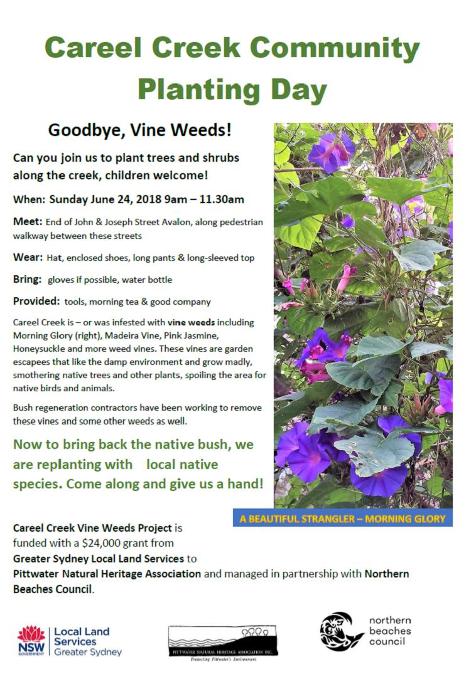
Reminder: Woolworths End Single Use Plastic Bags On June 20th, 2018
Woolworths: We've set the date for the end of single-use plastic bags.
The removal of single-use plastic bags has been a really important topic for our customers and our team. Which is why, Woolworths committed to phase out all single-use plastic bags at our checkouts nationally.
After listening to our customers and working with our teams, we're proud to announce that from the 20th of June 2018 all Woolworths stores will be single-use plastic bag free. We are committed to playing our part in reducing plastic usage and believe that this is the right thing to do for our environment.
This means that we, from the 20th of June, will no longer provide ‘free’ plastic bags at our checkouts in store. We've always encouraged the use of reusable bags and with this change it's now more important than ever for customers to bring in their own bags from home or pick up one of our reusable bags in store.
The Woolworths team continues to work hard to reduce our impact on the environment by supporting the reduction and recycling of plastics throughout our stores. Other initiatives include reducing the amount of plastic packaging on fruits and vegetables; introducing the new Australasian Recycling Label to help educate our customers on what can be recycled and where, as well as the expansion of our soft plastic recycling program.
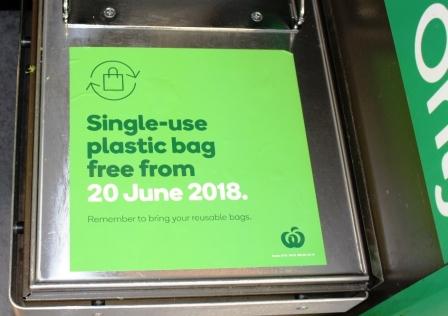
Woolworths: We've set the date for the end of single-use plastic bags.
The removal of single-use plastic bags has been a really important topic for our customers and our team. Which is why, Woolworths committed to phase out all single-use plastic bags at our checkouts nationally.
After listening to our customers and working with our teams, we're proud to announce that from the 20th of June 2018 all Woolworths stores will be single-use plastic bag free. We are committed to playing our part in reducing plastic usage and believe that this is the right thing to do for our environment.
This means that we, from the 20th of June, will no longer provide ‘free’ plastic bags at our checkouts in store. We've always encouraged the use of reusable bags and with this change it's now more important than ever for customers to bring in their own bags from home or pick up one of our reusable bags in store.
The Woolworths team continues to work hard to reduce our impact on the environment by supporting the reduction and recycling of plastics throughout our stores. Other initiatives include reducing the amount of plastic packaging on fruits and vegetables; introducing the new Australasian Recycling Label to help educate our customers on what can be recycled and where, as well as the expansion of our soft plastic recycling program.

Have Your Say On The Management Of Forests
May 15, 2018: Media Release
The NSW Government has begun consultation on the new Coastal Integrated Forestry Operations Approvals (IFOA), which sets out how native forestry operations are managed and regulated on public land in NSW.
Minister for Lands and Forestry Paul Toole and Minister for the Environment Gabrielle Upton said the Coastal IFOA remake was a vital step forward in the NSW Government’s forestry reform agenda.
“The NSW Government is committed to the long term and sustainable management of NSW’s forestry estate, for the benefit of the community, environment and our $2.4 billion forestry and product manufacturing industry,” Mr Toole said.
“The NSW Government is determined to get the right balance between the environment and industry – environmental standards can be strengthened at the same time as providing long term security of wood supply and certainty to investors and the industry.
“For the proposed new Coastal IFOA, this means ensuring that we do not erode environmental values or impact the critical wood supplies that our regional economies or industry rely on.
“Over the past six months, we have undertaken consultation on the Regional Forest Agreements, and this is the next important step.”
Ms Upton said the new Coastal IFOA includes once-in-a-generation changes that will ensure the environment is protected.
“For the first time ever, minimum thresholds are being set for the permanent protection of threatened species and habitat across the landscape, and the rules will be more transparent and enforceable,” Ms Upton said.
New legislation will be introduced that will increase penalty notices for not complying with the Coastal IFOA from $1,100 to $15,000. All other private native forestry businesses and regulated industries in NSW already face fines of at least $15,000.
“These changes are making it fairer for all industries to do business in NSW, while offering further protections to our State's forests,” Ms Upton said.
Other changes to the Coastal IFOA include:- The merger of four current Coastal IFOAs into a single approval for the entire coast of NSW;
- New rules that place limits on harvesting impacts over time and across the landscape;
- Map-based protections with simplified rules for operating near boundaries;
- Increased mapping of threatened ecological species, koala habitats, streams and trees, and;
- Permanent protections for giant trees and hollow-bearing trees.
- To complement the new Coastal IFOA, the NSW Government will soon commence a mapping exercise, applying modern technologies to gain a better understanding of key state forest sites on the north coast.
This work will be overseen by the Natural Resources Commission with independent environmental assessments to be designed and carried out by the Office of Environment and Heritage. The public will have a chance to have their say on the proposed framework and mapping approach in 2019.
For more information, and to have your say on the Coastal IFOA, visit: https://engage.environment.nsw.gov.au/forests
______________________________
From 'Proposed multi-scale landscape approach – download theMulti Scale Approach Factsheet here' Doc.;COASTAL IFOA SCALE• Includes all public coastal forests in NSW and consists of over 5.2 million hectares.• Across this area of public forests is a patchwork of State Forests and forest protected in National Parks and State Flora Reserves.• State Forests make up around 30% of the public forests in the Coastal IFOA area. Native timber production forests cover around 16% of this area.Environmental protections include:• An established network of protected public land conserving important habitat and ecosystems across coastal NSW.• The broad landscape-based habitat protection network includes National parks, Flora Reserves and special management zones.• Annual timber volume caps are also set to ensure a long term ecologically sustainable supply of timber.• Reporting requirements apply and monitoring to evaluate and ensure environmental outcomes are being achieved.
MANAGEMENT ZONE SCALE• A defined geographic region with an average size of 50,000 hectares.• Multiple timber production forests occur within each management area.• These areas will be fixed and mapped at the commencement of the proposed IFOA.• On average 50% of the management zone of state forests is protected.Environmental protections include:• Annual limits on the amount of harvesting in each management area to distribute harvesting across the landscape.• A maximum of 10% of a management area can be harvested per year.• If the management area is zoned for intensive harvesting,then a maximum of only 5% of that management area can be intensively harvested per year
LOCAL LANDSCAPE AREA SCALE• A defined area of timber production forests no larger than 1500 hectares.• On average there are four local landscape areas in each State Forest.• These areas will be mapped out progressively over time.• An average of 38% is protected before the new wildlife habitat clump requirements are considered. This will increase to an average of 41%.Environmental protections include:• A minimum of 5% of the harvest area to be permanently protected as a wildlife habitat clump to maintain habitat diversity and connectivity.• Rainforest, high conservation value old growth, habitat corridors and owl habitat will continue to be protected.• Threatened ecological communities have been mapped and will be excluded from harvesting.• Streams are more accurately mapped and exclusion zones apply to provide landscape connectivity and protect waterways.• Distributes intensive harvesting across the landscape and over a minimum 21 year period.• Improved koala mapping to retain koala browse trees to support movement between areas and food resources.
SITE• A site is the area where harvesting is taking place. Sites vary in size from about 45 to 250 hectares.• There are many sites, called coupes or compartments, within each local landscape area.• An average of 41% of State Forests at a site scale will be protected, increasing to 45% with added tree retention clumps.
Environmental protections include:• Areas will be permanently protected to provide short term refuge, maintain forest structure, and protect important habitat features.• Additional areas no less than 5 – 8% of the harvest area will be permanently set aside as new tree retention clumps.• Hollow-bearing trees, nest and roost trees and giant trees will be permanently protected to provide ongoing shelter and food resources.• Some target surveys will be retained for unique species of plants and animals that require protection.• Sites will now be measured, mapped and monitored with mobile and desktop devices.
Visit: Proposed changes to timber harvesting in NSW's coastal forests - NSW Government; 'Once approved, the new Coastal IFOA will set the rules for how we use and harvest these forests so it’s important that you have your say.'
May 15, 2018: Media Release
The NSW Government has begun consultation on the new Coastal Integrated Forestry Operations Approvals (IFOA), which sets out how native forestry operations are managed and regulated on public land in NSW.
Minister for Lands and Forestry Paul Toole and Minister for the Environment Gabrielle Upton said the Coastal IFOA remake was a vital step forward in the NSW Government’s forestry reform agenda.
“The NSW Government is committed to the long term and sustainable management of NSW’s forestry estate, for the benefit of the community, environment and our $2.4 billion forestry and product manufacturing industry,” Mr Toole said.
“The NSW Government is determined to get the right balance between the environment and industry – environmental standards can be strengthened at the same time as providing long term security of wood supply and certainty to investors and the industry.
“For the proposed new Coastal IFOA, this means ensuring that we do not erode environmental values or impact the critical wood supplies that our regional economies or industry rely on.
“Over the past six months, we have undertaken consultation on the Regional Forest Agreements, and this is the next important step.”
Ms Upton said the new Coastal IFOA includes once-in-a-generation changes that will ensure the environment is protected.
“For the first time ever, minimum thresholds are being set for the permanent protection of threatened species and habitat across the landscape, and the rules will be more transparent and enforceable,” Ms Upton said.
New legislation will be introduced that will increase penalty notices for not complying with the Coastal IFOA from $1,100 to $15,000. All other private native forestry businesses and regulated industries in NSW already face fines of at least $15,000.
“These changes are making it fairer for all industries to do business in NSW, while offering further protections to our State's forests,” Ms Upton said.
Other changes to the Coastal IFOA include:
- The merger of four current Coastal IFOAs into a single approval for the entire coast of NSW;
- New rules that place limits on harvesting impacts over time and across the landscape;
- Map-based protections with simplified rules for operating near boundaries;
- Increased mapping of threatened ecological species, koala habitats, streams and trees, and;
- Permanent protections for giant trees and hollow-bearing trees.
- To complement the new Coastal IFOA, the NSW Government will soon commence a mapping exercise, applying modern technologies to gain a better understanding of key state forest sites on the north coast.
This work will be overseen by the Natural Resources Commission with independent environmental assessments to be designed and carried out by the Office of Environment and Heritage. The public will have a chance to have their say on the proposed framework and mapping approach in 2019.
For more information, and to have your say on the Coastal IFOA, visit: https://engage.environment.nsw.gov.au/forests
______________________________
From 'Proposed multi-scale landscape approach – download theMulti Scale Approach Factsheet here' Doc.;
COASTAL IFOA SCALE
• Includes all public coastal forests in NSW and consists of over 5.2 million hectares.
• Across this area of public forests is a patchwork of State Forests and forest protected in National Parks and State Flora Reserves.
• State Forests make up around 30% of the public forests in the Coastal IFOA area. Native timber production forests cover around 16% of this area.
Environmental protections include:
• An established network of protected public land conserving important habitat and ecosystems across coastal NSW.
• The broad landscape-based habitat protection network includes National parks, Flora Reserves and special management zones.
• Annual timber volume caps are also set to ensure a long term ecologically sustainable supply of timber.
• Reporting requirements apply and monitoring to evaluate and ensure environmental outcomes are being achieved.
MANAGEMENT ZONE SCALE
• A defined geographic region with an average size of 50,000 hectares.
• Multiple timber production forests occur within each management area.
• These areas will be fixed and mapped at the commencement of the proposed IFOA.
• On average 50% of the management zone of state forests is protected.
Environmental protections include:
• Annual limits on the amount of harvesting in each management area to distribute harvesting across the landscape.
• A maximum of 10% of a management area can be harvested per year.
• If the management area is zoned for intensive harvesting,then a maximum of only 5% of that management area can be intensively harvested per year
LOCAL LANDSCAPE AREA SCALE
• A defined area of timber production forests no larger than 1500 hectares.
• On average there are four local landscape areas in each State Forest.
• These areas will be mapped out progressively over time.
• An average of 38% is protected before the new wildlife habitat clump requirements are considered. This will increase to an average of 41%.
Environmental protections include:
• A minimum of 5% of the harvest area to be permanently protected as a wildlife habitat clump to maintain habitat diversity and connectivity.
• Rainforest, high conservation value old growth, habitat corridors and owl habitat will continue to be protected.
• Threatened ecological communities have been mapped and will be excluded from harvesting.
• Streams are more accurately mapped and exclusion zones apply to provide landscape connectivity and protect waterways.
• Distributes intensive harvesting across the landscape and over a minimum 21 year period.
• Improved koala mapping to retain koala browse trees to support movement between areas and food resources.
SITE
• A site is the area where harvesting is taking place. Sites vary in size from about 45 to 250 hectares.
• There are many sites, called coupes or compartments, within each local landscape area.
• An average of 41% of State Forests at a site scale will be protected, increasing to 45% with added tree retention clumps.
Environmental protections include:
• Areas will be permanently protected to provide short term refuge, maintain forest structure, and protect important habitat features.
• Additional areas no less than 5 – 8% of the harvest area will be permanently set aside as new tree retention clumps.
• Hollow-bearing trees, nest and roost trees and giant trees will be permanently protected to provide ongoing shelter and food resources.
• Some target surveys will be retained for unique species of plants and animals that require protection.
• Sites will now be measured, mapped and monitored with mobile and desktop devices.
Visit: Proposed changes to timber harvesting in NSW's coastal forests - NSW Government; 'Once approved, the new Coastal IFOA will set the rules for how we use and harvest these forests so it’s important that you have your say.'
Park Bench Philosopher Antarctica In 2070: What Future Will We Choose? - Nature this week publishes a series of articles and recent studies discussing this and other issues that are emerging an overview of three of these studies, one of which stems from Australia; Ice losses from Antarctica have increased global sea levels by 7.6 mm since 1992, with two fifths of this rise (3.0 mm) coming in the last five years alone + It is estimated that there is enough water locked up in Antarctica's ice sheet to raise global sea levels by more than 50 meters (more than 164 feet)
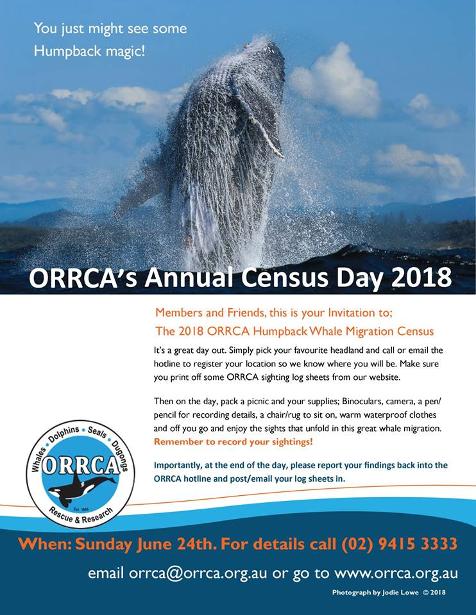
Sydney Metro Northwest: Proposed SEPP Amendment
June 8, 2018: NSW Department of Planning
You are invited to have your say on a proposed amendment to the State Environmental Planning Policy (State and Regional Development) 2011 for the development of government-owned land adjoining the Sydney Metro Northwest corridor.
The proposed amendment to the State and Regional Development SEPP aims to ensure a state-led, consistent and transparent planning pathway for the development of government land within the eight station precincts along Australia’s largest public transport infrastructure project; the $8.3 billion Sydney Metro Northwest.
Outlined in the consultation paper, the proposed amendment nominates the Minister for Planning as the consent authority for future development on identified government-owned land, if the development meets the criteria of State Significant Development.
State Significant Development must meet one or more of the following criteria:
- a principal subdivision establishing major lots or public domain areas
- the creation of new roadways and associated works
- has a capital investment value of more than $30 million.
Exhibition Commences 08/06/2018
Exhibition Concludes 06/07/2018
NSW Budget 2018: Take A Walk On The Wild Side
June 9, 2018: Media release - the Hon. Gladys Berejiklian, Premier of NSW
Iconic walking tracks across NSW will get a major facelift as part of a $1.9 billion investment to protect and improve the State’s environment and heritage.
Central to the investment is $630 million for the State’s National Parks estate, walking trails, public parklands and gardens to enhance visitor safety, amenity, enjoyment, and for education and research.
The funding, in this year’s Budget, demonstrates the NSW Liberals & Nationals Government’s commitment to preserve our natural assets, unique history and cultures.
More than $50 million will be spent upgrading iconic National Park walking tracks in Sydney, Port Stephens, Tweed-Byron, on the Macleay Valley Coast and the South Coast.
In Sydney, the Harbour Scenic Walk between Georges Heights and Middle Head, the Royal National Park’s Great Southern Nature Walk and the ‘Coast Track’ will be improved or extended.
“Our National Parks are world-famous. We are investing in their future while preserving their past,” said NSW Premier Gladys Berejiklian.
“This funding will ensure our National Parks continue to grow and are accessible to everyone. It will protect threatened species and preserve habitats for our wildlife.” Treasurer and Minister for Industrial Relations, Dominic Perrottet, said he is keen to experience the improved walking tracks.
“Bushwalking is one of my real passions away from politics, I am thrilled we will improve these iconic walking tracks so more people can see some of the most beautiful places in NSW first-hand.
“Our National Parks are among the real treasures of NSW, getting outdoors and enjoying them is a great way to spend time with your family and friends, and a good way to burn some energy off your kids,” Mr Perrottet said.
Environment Minister Gabrielle Upton added, “It is vitally important we protect and conserve the State’s environment and heritage assets.
“Our goal is to grow the NSW National Park estate and preserve our heritage, including our rich Aboriginal history.”
Other highlights from this year’s Environment and Heritage Budget include:
- $100 million to protect communities and the environment from natural disasters such as fire and extreme weather events;
- $100 million to improve waste management and resource recovery;
- $89 million to encourage landowners to maintain their sensitive habitats;
- $50 million, jointly funded by the Commonwealth, for a visitor precinct in time for the 250th anniversary in 2020 of the landing of Captain Cook and the meeting of two cultures on the shores of Kamay Botany Bay.
Environmental Approvals Secure For Rogetta Mine
June 6, 2018: Media release - The Hon. Josh Frydenberg MP, Minister for the Environment and Energy
The development of the Rogetta iron ore mine in north-western Tasmania has been approved under national environment law and is set to significantly boost local employment.
Located approximately seven kilometres south-east of the village of Hampshire and 30 kilometres south of Burnie, the project is an example of a development that is both economically beneficial and environmentally sustainable.
It will deliver significant economic and social benefits to Tasmania at the local, regional and state levels, including approximately 200 jobs during the construction phase and up to 100 permanent positions during the operational phase.
The proponent will also spend up to $100 million to develop and maintain the mine and the sale of its products will bring in export revenues of up $90-100 million each year.
The approval is subject to strict conditions to protect nationally significant species, including the Tasmanian devil.
Key among the conditions imposed are:
- financial support for the Save the Tasmanian Devil Program and to the Tasmanian Land Conservancy to use in conservation programs and provide positive outcomes for the endangered Tasmanian devil and the vulnerable spotted-tailed quoll; and
- strict measures to prevent endangered wedge-tailed eagles from colliding with powerlines.
Forward Mining Limited can now go ahead and develop the mine which involves open cut mining of iron ore, on site processing and trucking of the refined ore to Burnie for export.
The project was approved following a comprehensive environmental assessment in conjunction with the Tasmanian Government.
New Type Of Photosynthesis Discovered
June 15, 2018
The discovery changes our understanding of the basic mechanism of photosynthesis and should rewrite the textbooks.
It will also tailor the way we hunt for alien life and provide insights into how we could engineer more efficient crops that take advantage of longer wavelengths of light.
The discovery, published today in Science, was led by Imperial College London, supported by the BBSRC, and involved groups from the ANU in Canberra, the CNRS in Paris and Saclay and the CNR in Milan.
The vast majority of life on Earth uses visible red light in the process of photosynthesis, but the new type uses near-infrared light instead. It was detected in a wide range of cyanobacteria (blue-green algae) when they grow in near-infrared light, found in shaded conditions like bacterial mats in Yellowstone and in beach rock in Australia.
As scientists have now discovered, it also occurs in a cupboard fitted with infrared LEDs in Imperial College London.
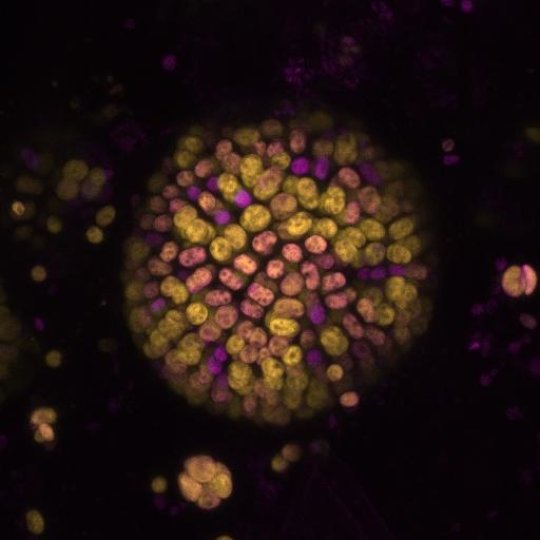
Colony of Chroococcidiopsis-like cells where the different colours represent photosynthesis driven by chlorophyll-a (magenta) and chlorophyll-f (yellow). Credit: Dennis Nuernberg
Photosynthesis beyond the red limit
The standard, near-universal type of photosynthesis uses the green pigment, chlorophyll-a, both to collect light and use its energy to make useful biochemicals and oxygen. The way chlorophyll-a absorbs light means only the energy from red light can be used for photosynthesis.
Since chlorophyll-a is present in all plants, algae and cyanobacteria that we know of, it was considered that the energy of red light set the 'red limit' for photosynthesis; that is, the minimum amount of energy needed to do the demanding chemistry that produces oxygen. The red limit is used in astrobiology to judge whether complex life could have evolved on planets in other solar systems.
However, when some cyanobacteria are grown under near-infrared light, the standard chlorophyll-a-containing systems shut down and different systems containing a different kind of chlorophyll, chlorophyll-f, takes over.
Until now, it was thought that chlorophyll-f just harvested the light. The new research shows that instead chlorophyll-f plays the key role in photosynthesis under shaded conditions, using lower-energy infrared light to do the complex chemistry. This is photosynthesis 'beyond the red limit'.
Lead researcher Professor Bill Rutherford, from the Department of Life Sciences at Imperial, said: "The new form of photosynthesis made us rethink what we thought was possible. It also changes how we understand the key events at the heart of standard photosynthesis. This is textbook changing stuff."
Preventing damage by light
Another cyanobacterium, Acaryochloris, is already known to do photosynthesis beyond the red limit. However, because it occurs in just this one species, with a very specific habitat, it had been considered a 'one-off'. Acaryochloris lives underneath a green sea-squirt that shades out most of the visible light leaving just the near-infrared.
The chlorophyll-f based photosynthesis reported today represents a third type of photosynthesis that is widespread. However, it is only used in special infrared-rich shaded conditions; in normal light conditions, the standard red form of photosynthesis is used.
It was thought that light damage would be more severe beyond the red limit, but the new study shows that it is not a problem in stable, shaded environments.
Co-author Dr Andrea Fantuzzi, from the Department of Life Sciences at Imperial, said: "Finding a type of photosynthesis that works beyond the red limit changes our understanding of the energy requirements of photosynthesis. This provides insights into light energy use and into mechanisms that protect the systems against damage by light."
These insights could be useful for researchers trying to engineer crops to perform more efficient photosynthesis by using a wider range of light. How these cyanobacteria protect themselves from damage caused by variations in the brightness of light could help researchers discover what is feasible to engineer into crop plants.
Textbook-changing insights
More detail could be seen in the new systems than has ever been seen before in the standard chlorophyll-a systems. The chlorophylls often termed 'accessory' chlorophylls were actually performing the crucial chemical step, rather than the textbook 'special pair' of chlorophylls in the centre of the complex.
This indicates that this pattern holds for the other types of photosynthesis, which would change the textbook view of how the dominant form of photosynthesis works.
Dr Dennis Nürnberg, the first author and initiator of the study, said: "I did not expect that my interest in cyanobacteria and their diverse lifestyles would snowball into a major change in how we understand photosynthesis. It is amazing what is still out there in nature waiting to be discovered."
Peter Burlinson, lead for frontier bioscience at BBSRC -- UKRI says, "This is an important discovery in photosynthesis, a process that plays a crucial role in the biology of the crops that feed the world. Discoveries like this push the boundaries of our understanding of life and Professor Bill Rutherford and the team at Imperial should be congratulated for revealing a new perspective on such a fundamental process."
Dennis J. Nürnberg, Jennifer Morton, Stefano Santabarbara, Alison Telfer, Pierre Joliot, Laura A. Antonaru, Alexander V. Ruban, Tanai Cardona, Elmars Krausz, Alain Boussac, Andrea Fantuzzi, A. William Rutherford. Photochemistry beyond the red limit in chlorophyll f–containing photosystems. Science, 2018; 360 (6394): 1210 DOI: 10.1126/science.aar8313
Mammals Going Nocturnal To Avoid Humans
June 15, 2018: University of California - Berkeley
Human activity is causing the planet's mammals to flee daylight for the protection of night, according to a new study from the University of California, Berkeley.
The study, published today in the journal Science, and supported in part by the National Science Foundation, represents the first effort to quantify the global effects of human activity on the daily activity patterns of wildlife. Its results highlight the powerful and widespread process by which animals alter their behavior alongside people: human disturbance is creating a more nocturnal natural world.
"Catastrophic losses in wildlife populations and habitats as a result of human activity are well documented, but the subtler ways in which we affect animal behavior are more difficult to detect and quantify," said Berkeley PhD candidate and study lead author Kaitlyn Gaynor.
Gaynor, along with co-authors Justin Brashares and Cheryl Hojnowski of UC Berkeley, and Neil Carter of Boise State University, applied a meta-analysis approach, using data for 62 species across six continents to look for global shifts in the timing of daily activity of mammals in response to humans. These data were collected by various approaches, including remotely triggered cameras, GPS and radio collars, and direct observation. For each species in each study site, the authors quantified the difference in animal nocturnality under low and high human disturbance.
On average, mammals were 1.36 times more nocturnal in response to human disturbance. This means that an animal that naturally split its activity evenly between the day and night increased its nighttime activity to 68% around people. This finding was consistent across carnivore and herbivore species of all body sizes greater than 1 kg (small mammals were not included in the study). The pattern also held across different types of human disturbance, including activities such as hunting, hiking, mountain biking, and infrastructure such as roads, residential settlement, and agriculture.
"While we expected to find a trend towards increased wildlife nocturnality around people, we were surprised by the consistency of the results around the world," said Gaynor. "Animals responded strongly to all types of human disturbance, regardless of whether people actually posed a direct threat, suggesting that our presence alone is enough to disrupt their natural patterns of behavior."
According to Brashares, a professor in the Department of Environmental Science, Policy, and Management and the study's senior author, the consequences of the behavioral shift in wildlife can be seen through contrasting lenses.
"On the positive side, the fact that wildlife is adapting to avoid humans temporally could be viewed as a path for coexistence of humans and wild animals on an increasingly crowded planet," said Brashares. "However, animal activity patterns reflect millions of years of adaptation--it's hard to believe we can simply squeeze nature into the dark half of each day and expect it to function and thrive."
The authors describe a range of potential negative consequences of the shifts they report in wildlife, including mismatches between the environment and an animal's traits, disruption of normal foraging behavior, increased vulnerability to non-human predators, and heightened competition.
They point out, however, that while many of the studies included in their analysis documented a clear increase in nocturnal activity, few examined the consequences for individual animals, populations, or ecosystems.
"We hope our findings will open up new avenues for wildlife research in human-dominated landscapes. We still have a lot to learn about the implications of altered activity patterns for the management of wildlife populations, interactions between species, and even human-induced evolution," said Gaynor.
Kaitlyn M. Gaynor, Cheryl E. Hojnowski, Neil H. Carter, Justin S. Brashares. The influence of human disturbance on wildlife nocturnality. Science, 2018; 360 (6394): 1232 DOI:10.1126/science.aar7121
The 2018 NSW Grandparents Day Photography Competition Is Now Open!
June 15, 2018: NSW Government
We’re calling on grandparents and grandchildren of all ages to get involved in the NSW Grandparents Day Photography Competition. Now in its third year, the competition celebrates older people and their contributions, while encouraging connections between generations. It’s open to all residents of NSW, young and old. We have two categories:
Open: open to all community members (NSW residents)School: specifically for school-aged entrants in NSW, from Kindergarten to Year 12Our judging panel will review all the entries and select one winner from each category who will be awarded a Microsoft Surface Pro tablet – the perfect tool to help you get creative and stay connected.
What’s your creative take on ‘Intergenerational’?The theme for this year’s competition is ‘intergenerational’. All entries need to bring this theme to life in some way. This could be through the focus of your image, it could be the way you play with ‘older’ and ‘younger’ in the colour scheme, it could be the subject matter or part of your caption – feel free to get creative! We’d love to see what the older people in your life and community mean to you, whether it’s a portrait of your superstar grandparent or an abstract image depicting your stereotype-defying neighbour.
Enter todayTo enter, simply submit your hi-res image along with a caption (up to 50 words) to our competition inbox: GPDphotocomp@oprAgency.com.au.
Entries close 5.00pm AEST on Friday 14 September 2018. For full entry details, check out the terms and conditions here.
Get social with usKeep up to date with competition news and tips by following us on Instagram!
Do I have to be a great photographer to enter?All residents of NSW are encouraged to enter the competition, no matter whether you’re a beginner, an enthusiast or a professional. While artistic merit, composition and technical excellence form part of our judging criteria, entries will also be judged on their originality, their overall impact and their subject matter relevance – how they bring the ‘Intergenerational’ theme to life and celebrate the contribution of older people.
Do I need to be a grandparent to enter? Or does my photo need to be of my grandparent?The competition is open to NSW residents of all ages, provided the entries bring the ‘Intergenerational’ theme to life. Entrants under the age of 18 need permission from their parent or guardian to enter. Check out the full terms and conditions here.
LITTLE REEF At NEWPORT BEACH
By John Illingsworth - Pittwater PathwaysBillie and John are John's parents. 'Dad came to Newport in 1931, 10 years old and recovering from diptheria. He was captain of Newport SLSC 1946 and 1947 I think, thereabouts anyway. Met a pretty girl who had trodden on a sea urchin while walking out to the reef. Helped her and so it went.' - J.I. - June 2018
Sublime Little Reef and the rocky bay alongside Newport Beach pool set to John Barry's beautiful 'All Time High' and some interesting geology.
By John Illingsworth - Pittwater Pathways
Billie and John are John's parents.
'Dad came to Newport in 1931, 10 years old and recovering from diptheria. He was captain of Newport SLSC 1946 and 1947 I think, thereabouts anyway. Met a pretty girl who had trodden on a sea urchin while walking out to the reef. Helped her and so it went.'
- J.I. - June 2018
Sublime Little Reef and the rocky bay alongside Newport Beach pool set to John Barry's beautiful 'All Time High' and some interesting geology.
Australian Wood Duck Flock In Careel Creek
Photographed June 15th, 2018
The Australian wood duck, maned duck or maned goose (Chenonetta jubata) is a dabbling duck found throughout much of Australia. It is the only living species in the genus Chenonetta.
The Australian wood duck was first described by the English ornithologist John Latham in 1801 under the binomial name Anas jubata.This 45–51 cm duck looks like a small goose, and feeds mostly by grazing in flocks.EtymologyChenonetta: Greek: χην khēn, χηνος khēnos “goose”; νηττα nētta “duck”.jubata: Latin: iubatus “maned, crested”, from iuba “mane, crest”
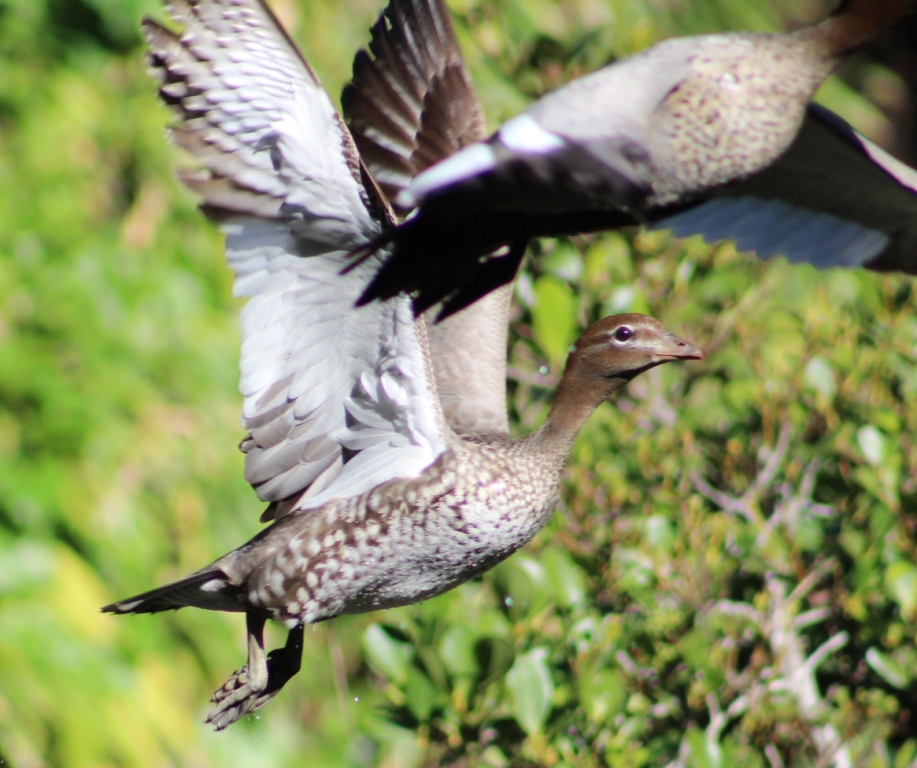
The male is grey with a dark brown head and mottled breast. The female has white stripes above and below the eye and mottled underparts. Both sexes have grey wings with black primaries and a white speculum. Juveniles are similar to adult females, but lighter and with a more streaky breast.
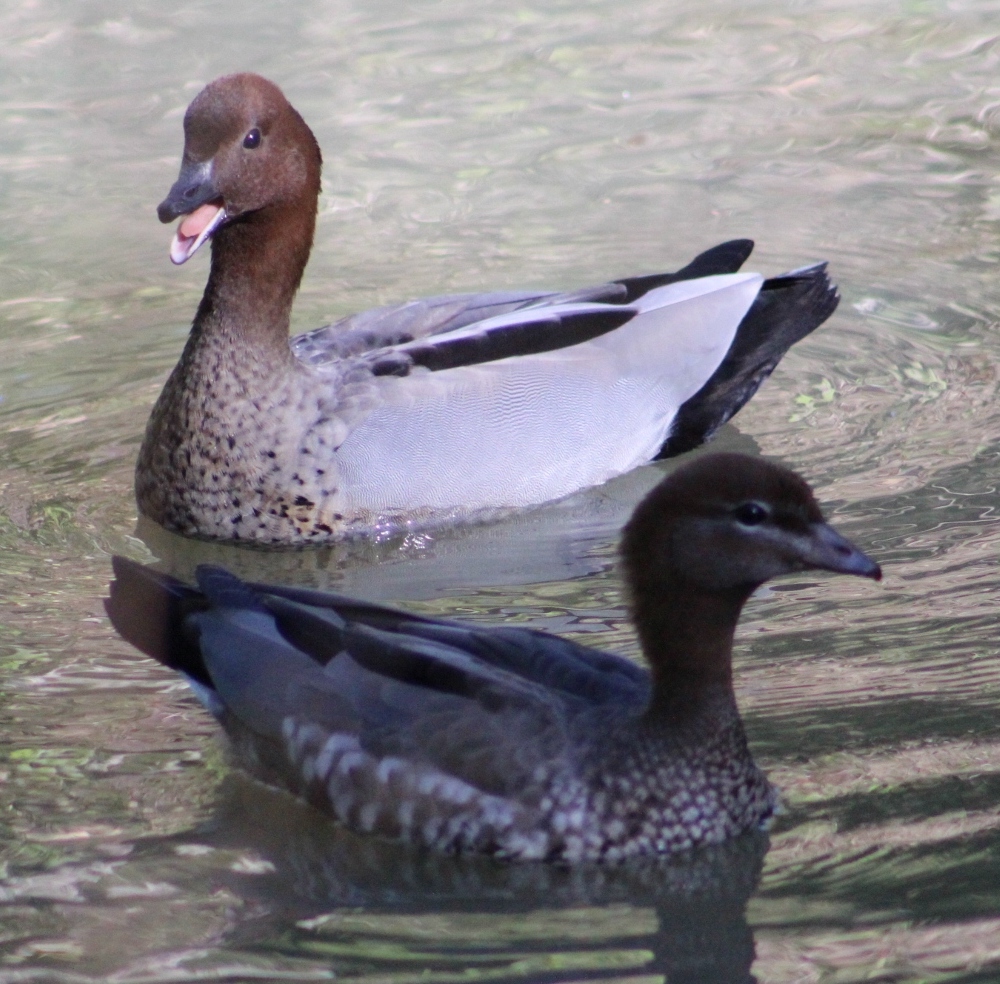
Male Australian wood duck
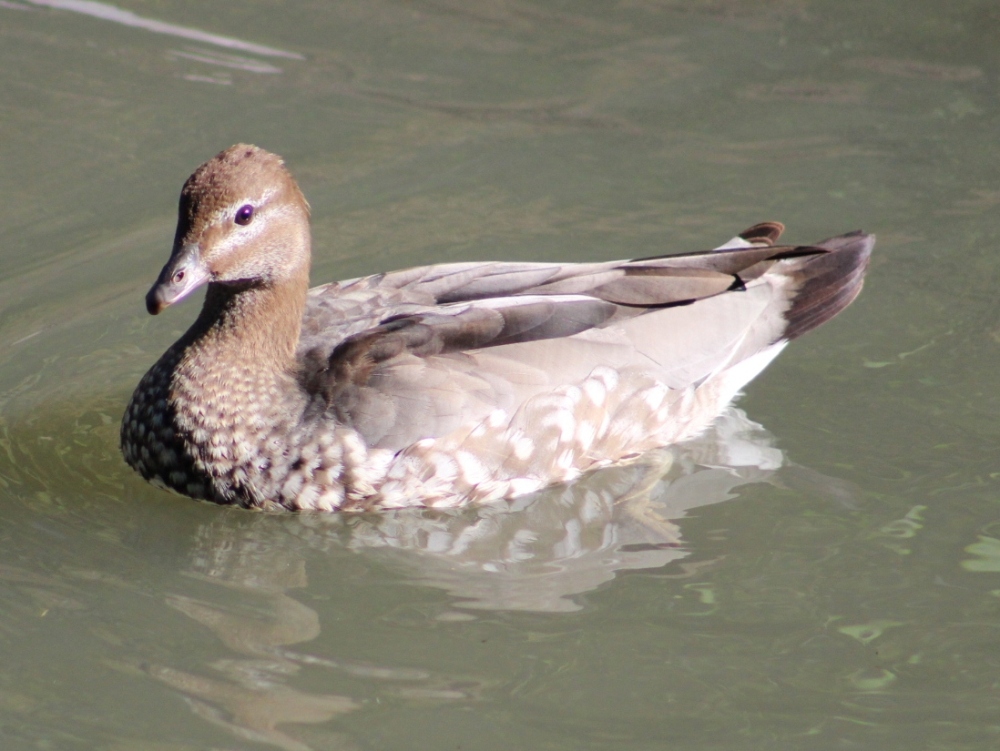
Female Australian wood duck
The Australian wood duck is widespread in Australia, including Tasmania. The Australian wood duck is found in grasslands, open woodlands, wetlands, flooded pastures and along the coast in inlets and bays. It is also common on farmland with dams, as well as around rice fields, sewage ponds and in urban parks. It will often be found around deeper lakes that may be unsuitable for other waterbirds' foraging, as it prefers to forage on land.
The most common call is a loud, rising croaky gnow sound by the females, and the male call is the same except smoother, shorter and higher than the females. Staccato chattering is also present in flocks.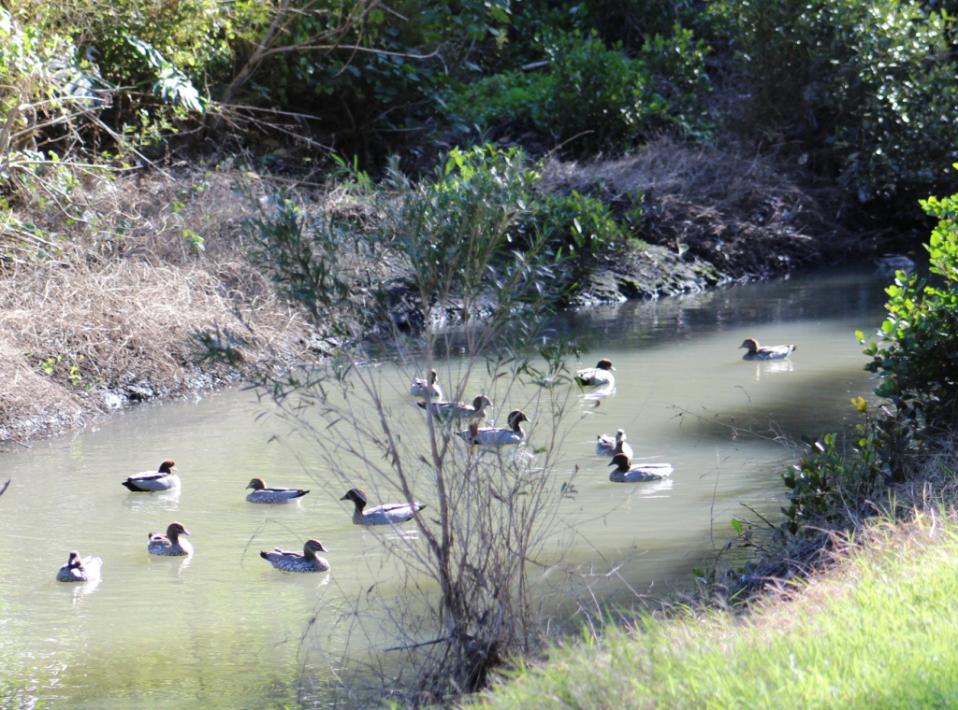
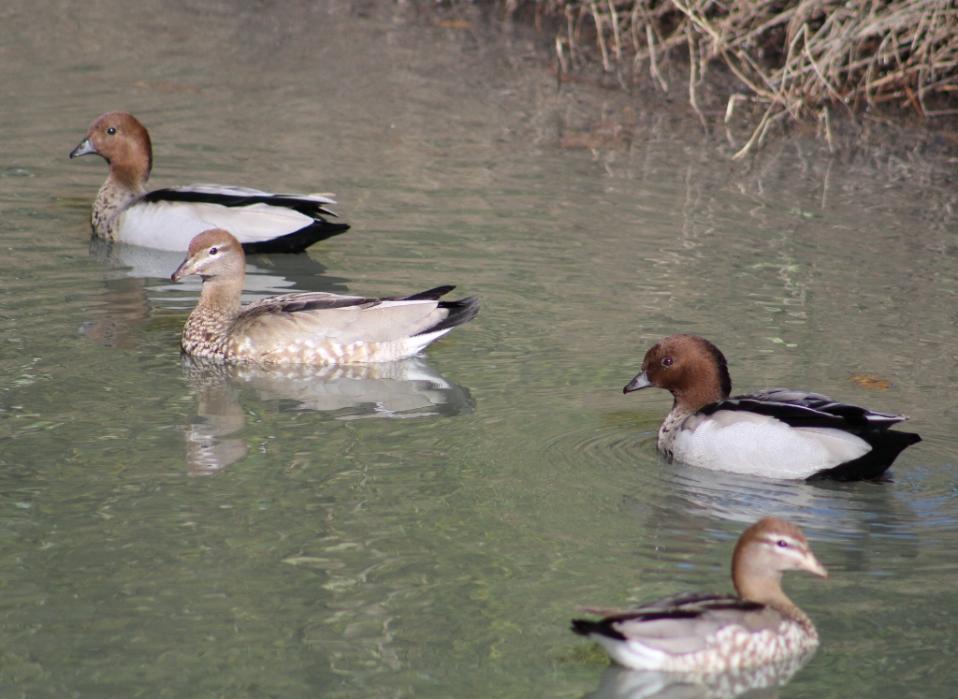
Photographed June 15th, 2018
The Australian wood duck, maned duck or maned goose (Chenonetta jubata) is a dabbling duck found throughout much of Australia. It is the only living species in the genus Chenonetta.
The Australian wood duck was first described by the English ornithologist John Latham in 1801 under the binomial name Anas jubata.
This 45–51 cm duck looks like a small goose, and feeds mostly by grazing in flocks.
Etymology
Chenonetta: Greek: χην khēn, χηνος khēnos “goose”; νηττα nētta “duck”.
jubata: Latin: iubatus “maned, crested”, from iuba “mane, crest”

The male is grey with a dark brown head and mottled breast. The female has white stripes above and below the eye and mottled underparts. Both sexes have grey wings with black primaries and a white speculum. Juveniles are similar to adult females, but lighter and with a more streaky breast.

Male Australian wood duck

Female Australian wood duck
The Australian wood duck is widespread in Australia, including Tasmania. The Australian wood duck is found in grasslands, open woodlands, wetlands, flooded pastures and along the coast in inlets and bays. It is also common on farmland with dams, as well as around rice fields, sewage ponds and in urban parks. It will often be found around deeper lakes that may be unsuitable for other waterbirds' foraging, as it prefers to forage on land.
The most common call is a loud, rising croaky gnow sound by the females, and the male call is the same except smoother, shorter and higher than the females. Staccato chattering is also present in flocks.


Whales Breaching Off Avalon Beach
Photographed 10.30 a.m. June 15th, 2018
There's a constant stream of whales heading north at present - a fair way out today; so you need a better camera with longer lens than this - but the breaches are seeable.Five of us on shore at Sth. Av. - 'Did you see that one?!'All strangers - all joined in enjoying the best show in Winter.
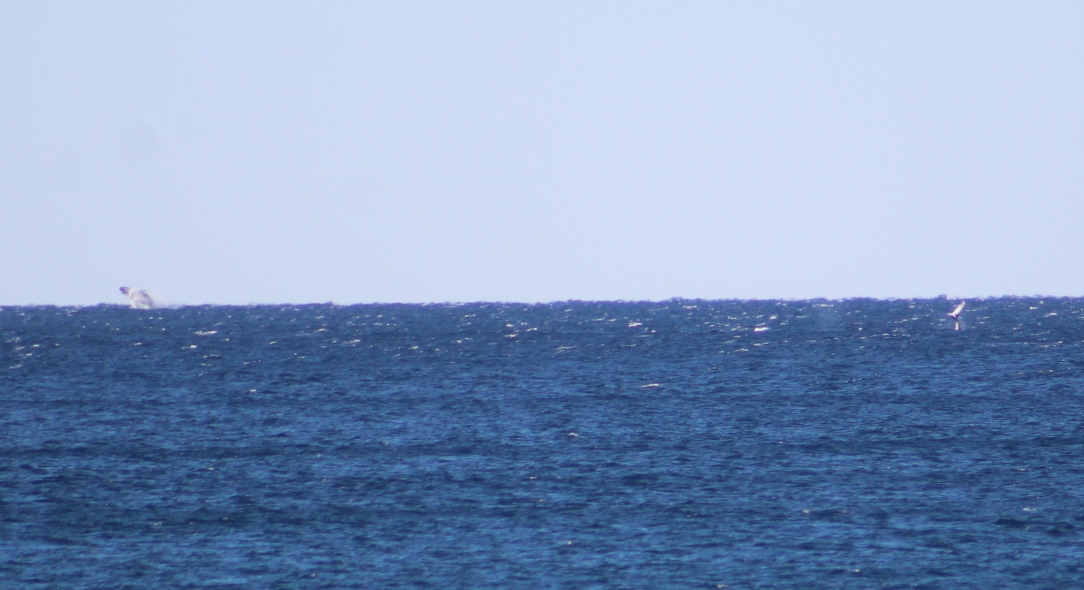
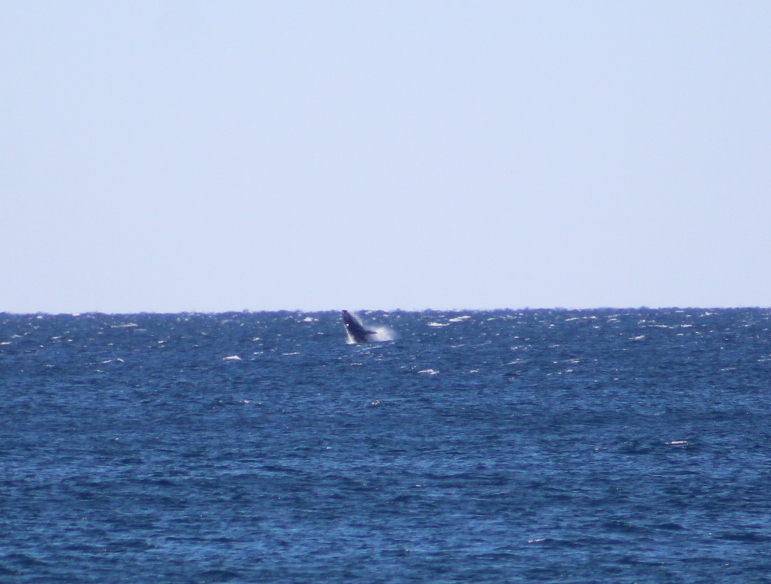
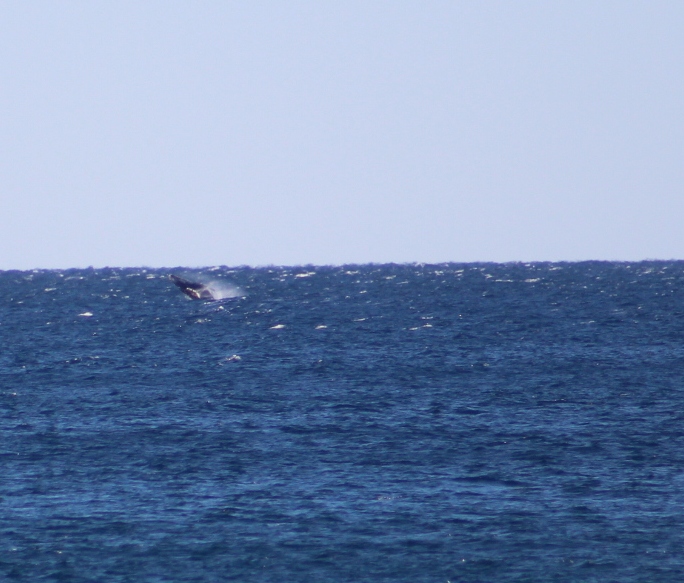
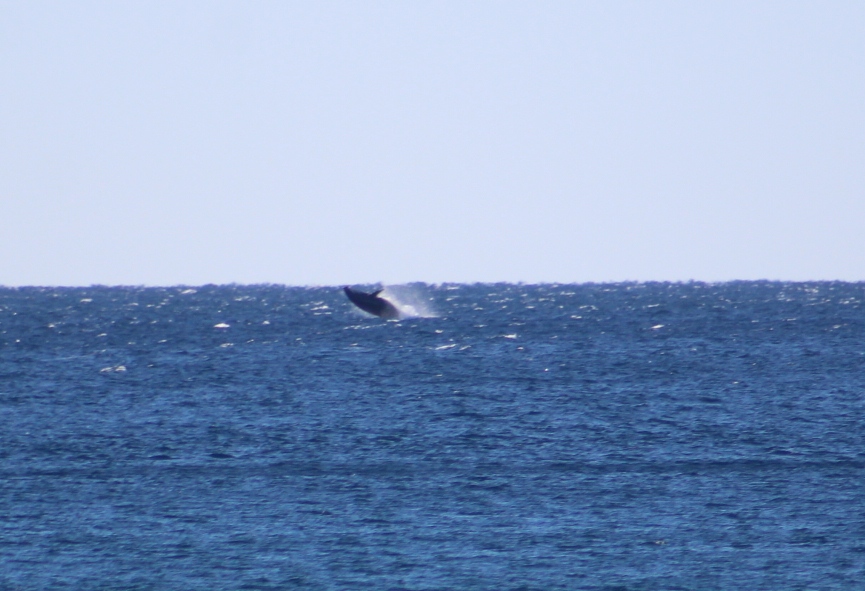
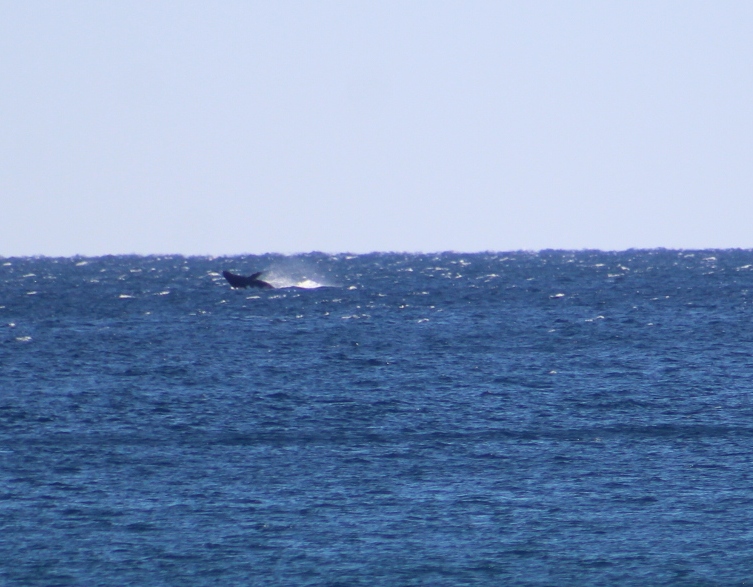
Photographed 10.30 a.m. June 15th, 2018
There's a constant stream of whales heading north at present - a fair way out today; so you need a better camera with longer lens than this - but the breaches are seeable.
Five of us on shore at Sth. Av. - 'Did you see that one?!'
All strangers - all joined in enjoying the best show in Winter.





A Whale Breach A Lot Closer Than That
Some amazing footage captured by Tash Morton on the Port Jet Cruise Adventures (Port Macquarie) wave rider on Friday June 8th.
A young male adolescent having some fun!
Some amazing footage captured by Tash Morton on the Port Jet Cruise Adventures (Port Macquarie) wave rider on Friday June 8th.
A young male adolescent having some fun!
Wollemi Pines Are Dinosaur Trees
June 15, 2018by Cris Brack, Assoc Professor Forest measurement & management, Australian National UniversityThere’s a tree that once covered the whole of Australia, then dwindled to a dozen examples, and is now spread around the world. We call it the Wollemi pine (Wollemia nobilis), but you could call it the dinosaur tree.
Fossil evidence indicates that between 200 million and 100 million years ago, Wollemi pine was present across all of Australia. A dryer, more flammable continent is likely to have driven the tree to near extinction over the millennia, leaving just a very small remnant of the Wollemi in a secluded deep gully not far from Sydney.
And there these trees remained, hidden, until they were discovered by a canyoning National Park worker in 1994.
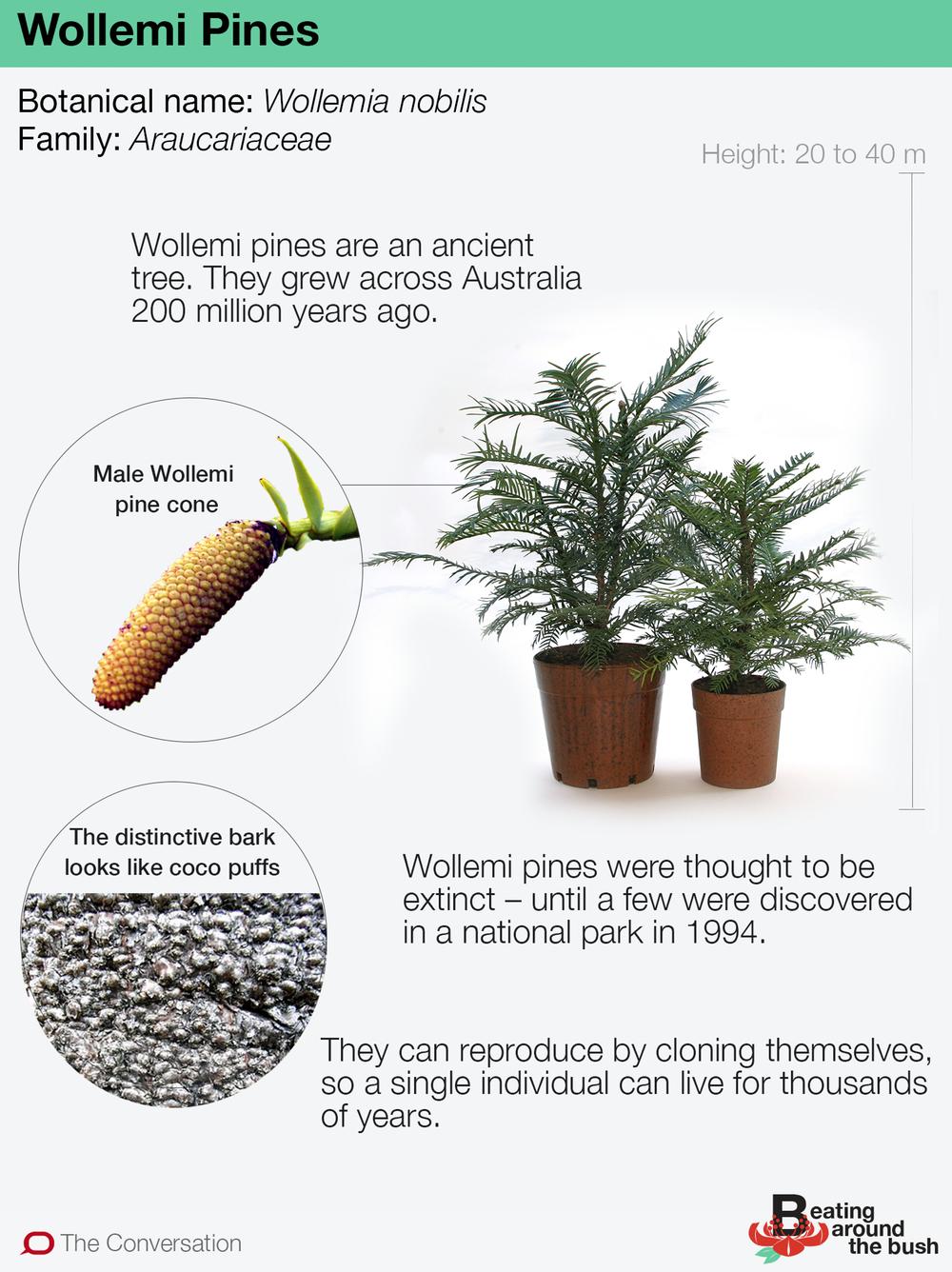
A spectacular discoveryThe reaction to the discovery of this tree, thought to have disappeared 100 million years ago and only known through its fossils, was spectacular. Great secrecy was maintained around the site of the find. Because there were so few, the individual trees in the gorge were given their own names to celebrate their importance and acknowledge the efforts of those trying to protect them.
Scientists, arborists and botanists swung into action to discover ways to propagate more trees and establish other colonies of the Wollemi as insurance against that single refuge being lost.
There was a great sigh of relief when it was discovered that trees could be successfully cloned, and new trees were potted up in the Sydney and Mount Annan Botanic Gardens. The interest in these original cloned offspring was so great that they were auctioned off by Sotheby’s, with the profits going back to support more research into this little-known living fossil.
Students and staff from my school at the Australian National University pooled together to bid for a clone of the Wollemi, christened the “John Banks” – named for our colleague Dr John C.G. Banks, who was one of the first researchers to describe the tree’s dendrology. We planted our tree in memory of John, with a cage around it because it was so rare and valuable.
Sent around the worldIn 2006, just over a decade after the original discovery, huge numbers of cloned Wollemi Pine seedlings were released from the official nursery in Queensland.
Every major nursery in Australia stocked potted Wollemi Pines for sale to a public who were keen to own a piece of ancient life and help ensure it didn’t go extinct. Enthusiasts around the world also bought their own dinosaur trees.
But it’s not just gardeners who have spread the Wollemi back to all corners of Australia and across the seas. Special Wollemi pines are also in the diplomatic service, having been presented by Australian prime ministers and foreign affairs ministers to various dignitaries.
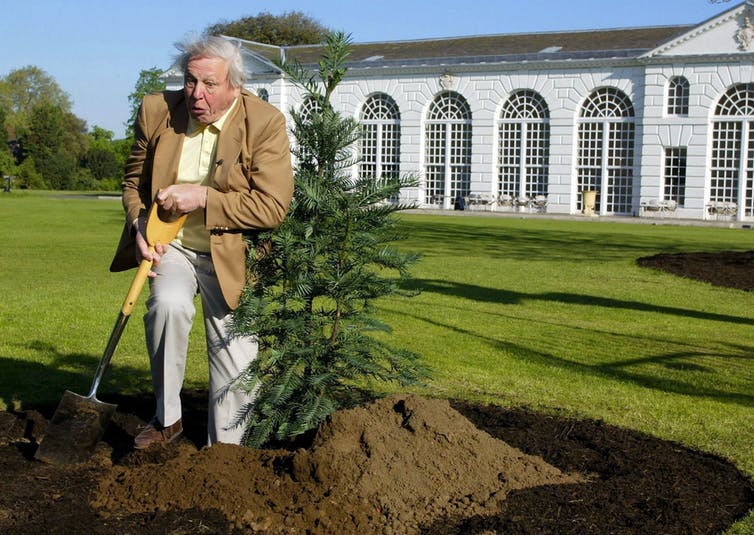
Sir David Attenborough planted a Wollemi pine at Kew Gardens in West London, in May 2005. photo courtesy EPA/Geoff Caddick
Seedlings are an obvious choice to represent long-term friendship and trust, as the act of planting a tree is one of hope for the future and a common good. A seedling that can trace its history back more than 100 million years, and which represents the reversal of an extinction, is even better.
Wollemi were thought to be extinct long before humans arrived in Australia, so there is no opportunity for humans to have used it in any specific way. However, ancient species may have properties or traits that are no longer present in evolved plants and these may be useful. For example, extracts from Wollemi pine leaves have been found to be successful in inhibiting a pest that affects winter wheat production – which may help control an expensive problem without herbicides.
Scientists found that extracts from the leaves of the Wollemi contained chemicals that had never previously been described, and which suppressed annual ryegrass (Lolium rigidum). The ryegrass, like many modern weeds, has evolved in the absence of Wollemi and thus was unlikely to have developed resistance to its chemistry.
How does it grow?Little was known about Wollemi pines when the remnant was found. We knew the conditions of the gorge where they grew, but not whether these were optimal. Could the tree survive in hotter or cooler, drier or wetter, more clay or gravelly soils?
We now know from planting experience outside the National Park that Wollemi pines can grow on exposed rock slopes, surviving frost and temperatures lower than -5℃ with the help of a waxy coat it puts on top of its growing buds. They can also survive heat greater than 45℃ in full sun.
Some Wollemi pines have been known to happily sit in small pots on verandas or decks, growing to over 3 metres – only to die within weeks of being transplanted into carefully prepared holes. They can be slow-growing, but given good light and moisture they can grow more than 50cm per year. Horticulturalists and the Sydney Royal Botanic Gardens continue to work on finding the best ways of tending these pines.
Wollemi pines, unlike their nearest neighbours in the Araucariaceae, can also produce coppice or epicormic shoots in response to drought or fire. It is likely that this ability is responsible for the survival of the original remanants in the National Park, with new upper stems regenerating from below-ground stocks century after century.
A potential issue with clonal reproduction is the lack of genetic diversity, which could make the pines susceptible to further environmental changes or pests. However, many trees are maturing and producing viable seeds, and there is certainly diversity in the phenology with some Wollemi of the same age producing female cones, some male cones (and some both).
Despite the ability to survive cold and heat and even recover from damage using epicormics, Wollemi Pines may not make ideal street trees, as the branches on the trunk shed relatively quickly. Shedding leaves, bark or branches are regularly complained about by residents in cities. But in the right place in a backyard – with low frost intensity, warm summers and enough moisture – you can grow your very own dinosaur tree.
____________________________________
First published by The Conversation as part of their new Beating Around the Bush, a series that profiles native plants. Read more about the series here or get in touch to pitch a plant at batb@theconversation.edu.au.Republished under Creative Commons licence.
June 15, 2018
by Cris Brack, Assoc Professor Forest measurement & management, Australian National University
There’s a tree that once covered the whole of Australia, then dwindled to a dozen examples, and is now spread around the world. We call it the Wollemi pine (Wollemia nobilis), but you could call it the dinosaur tree.
Fossil evidence indicates that between 200 million and 100 million years ago, Wollemi pine was present across all of Australia. A dryer, more flammable continent is likely to have driven the tree to near extinction over the millennia, leaving just a very small remnant of the Wollemi in a secluded deep gully not far from Sydney.
And there these trees remained, hidden, until they were discovered by a canyoning National Park worker in 1994.

A spectacular discovery
The reaction to the discovery of this tree, thought to have disappeared 100 million years ago and only known through its fossils, was spectacular. Great secrecy was maintained around the site of the find. Because there were so few, the individual trees in the gorge were given their own names to celebrate their importance and acknowledge the efforts of those trying to protect them.
Scientists, arborists and botanists swung into action to discover ways to propagate more trees and establish other colonies of the Wollemi as insurance against that single refuge being lost.
There was a great sigh of relief when it was discovered that trees could be successfully cloned, and new trees were potted up in the Sydney and Mount Annan Botanic Gardens. The interest in these original cloned offspring was so great that they were auctioned off by Sotheby’s, with the profits going back to support more research into this little-known living fossil.
Students and staff from my school at the Australian National University pooled together to bid for a clone of the Wollemi, christened the “John Banks” – named for our colleague Dr John C.G. Banks, who was one of the first researchers to describe the tree’s dendrology. We planted our tree in memory of John, with a cage around it because it was so rare and valuable.
Sent around the world
In 2006, just over a decade after the original discovery, huge numbers of cloned Wollemi Pine seedlings were released from the official nursery in Queensland.
Every major nursery in Australia stocked potted Wollemi Pines for sale to a public who were keen to own a piece of ancient life and help ensure it didn’t go extinct. Enthusiasts around the world also bought their own dinosaur trees.
But it’s not just gardeners who have spread the Wollemi back to all corners of Australia and across the seas. Special Wollemi pines are also in the diplomatic service, having been presented by Australian prime ministers and foreign affairs ministers to various dignitaries.

Sir David Attenborough planted a Wollemi pine at Kew Gardens in West London, in May 2005. photo courtesy EPA/Geoff Caddick
Seedlings are an obvious choice to represent long-term friendship and trust, as the act of planting a tree is one of hope for the future and a common good. A seedling that can trace its history back more than 100 million years, and which represents the reversal of an extinction, is even better.
Wollemi were thought to be extinct long before humans arrived in Australia, so there is no opportunity for humans to have used it in any specific way. However, ancient species may have properties or traits that are no longer present in evolved plants and these may be useful. For example, extracts from Wollemi pine leaves have been found to be successful in inhibiting a pest that affects winter wheat production – which may help control an expensive problem without herbicides.
Scientists found that extracts from the leaves of the Wollemi contained chemicals that had never previously been described, and which suppressed annual ryegrass (Lolium rigidum). The ryegrass, like many modern weeds, has evolved in the absence of Wollemi and thus was unlikely to have developed resistance to its chemistry.
How does it grow?
Little was known about Wollemi pines when the remnant was found. We knew the conditions of the gorge where they grew, but not whether these were optimal. Could the tree survive in hotter or cooler, drier or wetter, more clay or gravelly soils?
We now know from planting experience outside the National Park that Wollemi pines can grow on exposed rock slopes, surviving frost and temperatures lower than -5℃ with the help of a waxy coat it puts on top of its growing buds. They can also survive heat greater than 45℃ in full sun.
Some Wollemi pines have been known to happily sit in small pots on verandas or decks, growing to over 3 metres – only to die within weeks of being transplanted into carefully prepared holes. They can be slow-growing, but given good light and moisture they can grow more than 50cm per year. Horticulturalists and the Sydney Royal Botanic Gardens continue to work on finding the best ways of tending these pines.
Wollemi pines, unlike their nearest neighbours in the Araucariaceae, can also produce coppice or epicormic shoots in response to drought or fire. It is likely that this ability is responsible for the survival of the original remanants in the National Park, with new upper stems regenerating from below-ground stocks century after century.
A potential issue with clonal reproduction is the lack of genetic diversity, which could make the pines susceptible to further environmental changes or pests. However, many trees are maturing and producing viable seeds, and there is certainly diversity in the phenology with some Wollemi of the same age producing female cones, some male cones (and some both).
Despite the ability to survive cold and heat and even recover from damage using epicormics, Wollemi Pines may not make ideal street trees, as the branches on the trunk shed relatively quickly. Shedding leaves, bark or branches are regularly complained about by residents in cities. But in the right place in a backyard – with low frost intensity, warm summers and enough moisture – you can grow your very own dinosaur tree.
____________________________________
First published by The Conversation as part of their new Beating Around the Bush, a series that profiles native plants. Read more about the series here or get in touch to pitch a plant at batb@theconversation.edu.au.
Republished under Creative Commons licence.
Research Underway At The Lake Cargelligo Fish And Bird Nursery
June 14, 2018: NSW Office of Environment & HeritageRecent surveys of both fish and birds in and around Lake Cargelligo by the Office of Environment and Heritage (OEH) and a local ecologist are helping to develop a more complete picture about how the lake contributes to the ecological health of the whole Lachlan valley.OEH ecologist Dr Jo Lenehan says the research is helping to understand the role the waterway plays as a breeding area for a range of native species.
“Our research has involved taking fish samples during all three of the most recent inflows to Lake Cargelligo, and we’ve found strong numbers of juveniles from a surprising array of species,” says Dr Lenehan.
Dr Lenehan works closely with local ecologist Adam Kerezsy, whose local insights are then made available to the Lachlan Environmental Water Advisory Group and considered in environmental water plans for the Lachlan valley.
“It’s been fantastic to see plenty of baby bony bream and other small species like gudgeons, Australian smelt and hardyhead as part of this research, because even though people don’t usually see them these are the species that underpin our ecosystem. Without small fish, we’re unlikely to have big fish like cod and Golden perch,” said Mr Kerezsy.
“Bony bream school and are a main food source for the larger fish-eating birds like pelicans and cormorants, and we’ve also seen large numbers of pelicans feeding on Lake Cargelligo, especially as Lake Brewster draws down after the end of the irrigation season and food supplies within Brewster become limited. Lake Cargelligo is now providing a productive and important foraging ground for both adults and juvenile pelicans dispersing from their breeding site at Lake Brewster,” he said.
Australian smelt, hardyhead and gudgeons are smaller fish, rarely reaching seven or eight centimetres, but they are still a vital food source, not only for birds like terns and pelicans, but also for larger fish. The research has also shown good numbers of juvenile Golden perch down to 30mm in length, indicating a successful result of local breeding events.
“This big, shallow lake, complete with a lot of different habitats, such as creeks, canals, backwaters and plenty of cover provides an ideal breeding environment for fish because there’s plenty of food and plenty of places to hide. Further work is needed to confirm the extent to which fish species use the lake for breeding before moving back into the river,” said Mr Kerezsy.
Dr Lenehan says that the diversity of waterbirds is also a positive sign, with Lake Cargelligo the only location in the mid-Lachlan where both the sharp-tailed sandpiper and marsh sandpiper were recorded last season.
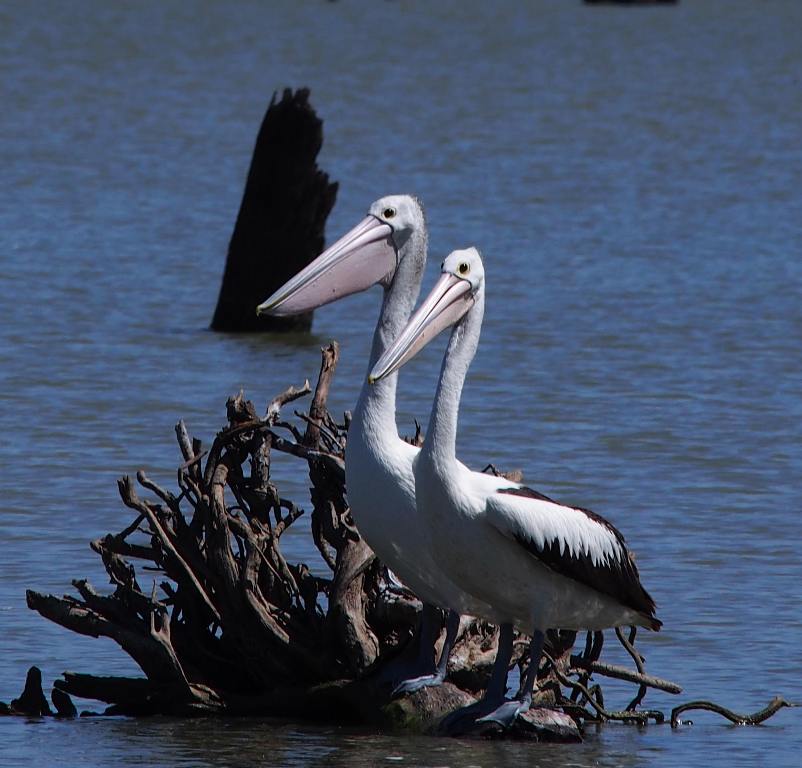
Pelicans Lake Cargelligo - Photo credit Adam Kerezsy - NSW Office of Environment & Heritage
June 14, 2018: NSW Office of Environment & Heritage
Recent surveys of both fish and birds in and around Lake Cargelligo by the Office of Environment and Heritage (OEH) and a local ecologist are helping to develop a more complete picture about how the lake contributes to the ecological health of the whole Lachlan valley.
OEH ecologist Dr Jo Lenehan says the research is helping to understand the role the waterway plays as a breeding area for a range of native species.
“Our research has involved taking fish samples during all three of the most recent inflows to Lake Cargelligo, and we’ve found strong numbers of juveniles from a surprising array of species,” says Dr Lenehan.
Dr Lenehan works closely with local ecologist Adam Kerezsy, whose local insights are then made available to the Lachlan Environmental Water Advisory Group and considered in environmental water plans for the Lachlan valley.
“It’s been fantastic to see plenty of baby bony bream and other small species like gudgeons, Australian smelt and hardyhead as part of this research, because even though people don’t usually see them these are the species that underpin our ecosystem. Without small fish, we’re unlikely to have big fish like cod and Golden perch,” said Mr Kerezsy.
“Bony bream school and are a main food source for the larger fish-eating birds like pelicans and cormorants, and we’ve also seen large numbers of pelicans feeding on Lake Cargelligo, especially as Lake Brewster draws down after the end of the irrigation season and food supplies within Brewster become limited. Lake Cargelligo is now providing a productive and important foraging ground for both adults and juvenile pelicans dispersing from their breeding site at Lake Brewster,” he said.
Australian smelt, hardyhead and gudgeons are smaller fish, rarely reaching seven or eight centimetres, but they are still a vital food source, not only for birds like terns and pelicans, but also for larger fish. The research has also shown good numbers of juvenile Golden perch down to 30mm in length, indicating a successful result of local breeding events.
“This big, shallow lake, complete with a lot of different habitats, such as creeks, canals, backwaters and plenty of cover provides an ideal breeding environment for fish because there’s plenty of food and plenty of places to hide. Further work is needed to confirm the extent to which fish species use the lake for breeding before moving back into the river,” said Mr Kerezsy.
Dr Lenehan says that the diversity of waterbirds is also a positive sign, with Lake Cargelligo the only location in the mid-Lachlan where both the sharp-tailed sandpiper and marsh sandpiper were recorded last season.

Pelicans Lake Cargelligo - Photo credit Adam Kerezsy - NSW Office of Environment & Heritage
Trio Of Infant Planets Discovered Around Newborn Star
June 13, 2018Two independent teams of astronomers have uncovered convincing evidence that three young planets are in orbit around an infant star known as HD 163296. Using a new planet-finding strategy, the astronomers identified three discrete disturbances in a young star's gas-filled disk: the strongest evidence yet that newly formed planets are in orbit there.
Over the past several years, the Atacama Large Millimeter/submillimeter Array (ALMA) has transformed our understanding of protoplanetary disks -- the gas- and dust-filled planet factories that encircle young stars. The rings and gaps in these disks provide intriguing circumstantial evidence for the presence of planets. Other phenomena, however, could account for these tantalizing features.
Using a new planet-hunting technique that identifies unusual patterns in the flow of gas within a protoplanetary disk, two teams of astronomers have confirmed the distinct, telltale hallmarks of newly formed planets orbiting an infant star in our galaxy. These results are presented in a pair of papers appearing in the Astrophysical Journal Letters.
"We looked at the localized, small-scale motion of gas in a star's protoplanetary disk. This entirely new approach could uncover some of the youngest planets in our galaxy, all thanks to the high-resolution images coming from ALMA," said Richard Teague, an astronomer at the University of Michigan and principal author on one of the papers.
To make their respective discoveries, each team analyzed the data from various ALMA observations of the young star HD 163296. HD 163296 is about 4 million years old and located about 330 light-years from Earth in the direction of the constellation Sagittarius.
Rather than focusing on the dust within the disk, which was clearly imaged in earlier ALMA observation, the astronomers instead studied the distribution and motion of carbon monoxide (CO) gas throughout the disk. Molecules of CO naturally emit a very distinctive millimeter-wavelength light that ALMA can observe. Subtle changes in the wavelength of this light due to the Doppler effect provide a glimpse into the kinematics -- or motion -- of the gas in the disk.
If there were no planets, gas would move around a star in a very simple, predictable pattern known as Keplerian rotation.
"It would take a relatively massive object, like a planet, to create localized disturbances in this otherwise orderly motion," said Christophe Pinte of Monash University in Australia and lead author on one of the two papers. "Our new technique applies this principle to help us understand how planetary systems form."
The team led by Teague identified two distinctive planet-like patterns in the disk, one at approximately 80 astronomical units (AU) from the star and the other at 140 AU. (An astronomical unit is the average distance from the Earth to the Sun, or about 150 million kilometers.) The other team, led by Pinte, identified the third at about 260 AU from the star. The astronomers calculate that all three planets are similar in mass to Jupiter.
The two teams used variations on the same technique, which looked at anomalies in the flow of the gas -- as seen in the shifting wavelengths of the CO emission -- that would indicate it was interacting with a massive object.
Teague and his team measured variations in the gas's velocity. This revealed the impact of multiple planets on the gas motion nearer to the star.
Pinte and his team more directly measured the gas's actual velocity, which is better for studying the outer portion of the disk and can more accurately pinpoint the location of a potential planet.
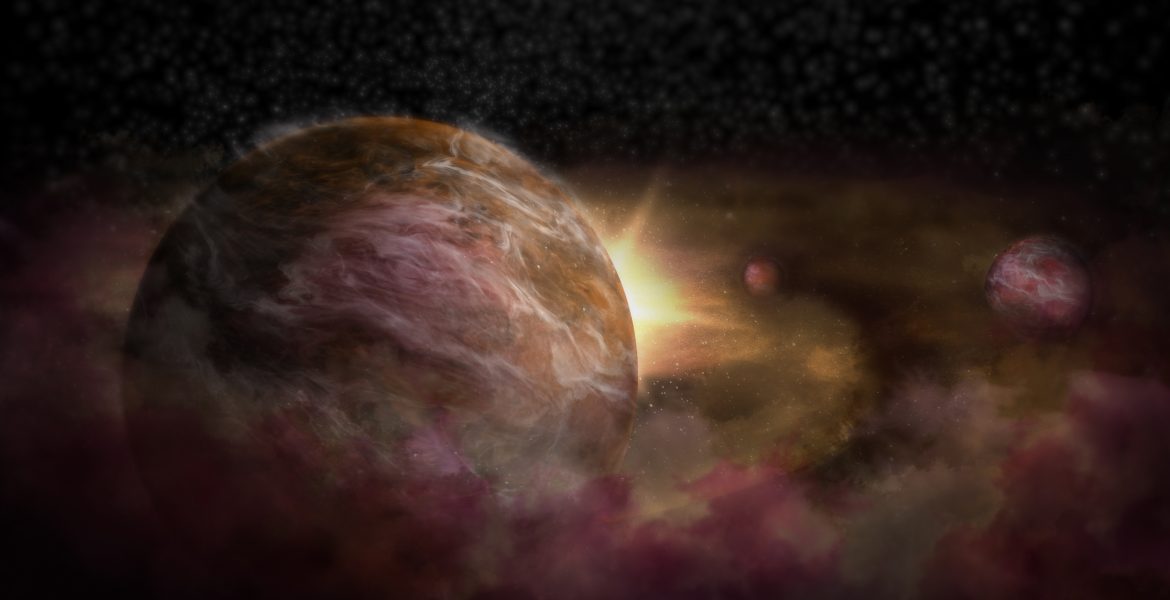
Artist impression of protoplanets forming around a young star. Credit: NRAO/AUI/NSF; S. Dagnello
Detecting protoplanets"Though thousands of exoplanets have been discovered in the last few decades, detecting protoplanets is at the frontier of science," said Pinte. The techniques currently used for finding exoplanets in fully formed planetary systems -- such as measuring the wobble of a star or how a transiting planet dims starlight -- don't lend themselves to detecting protoplanets.
ALMA's stunning images of HD 163296 and other similar systems have revealed intriguing patterns of concentric rings and gaps within protoplanetary disks. These gaps may be evidence that protoplanets are plowing the dust and gas away from their orbits, incorporating some of it into their own atmospheres. A previous study of this particular star's disk shows that the dust and gas gaps overlap, suggesting that at least two planets have formed there.
These initial observations, however, merely provided circumstantial evidence and could not be used to accurately estimate the masses of the planets, noted Teague. "Since other mechanisms can also produce ringed gaps in a protoplanetary disk, it is impossible to say conclusively that planets are there by merely looking at the overall structure of the disk," he said.
Latest innovationThe key to a more conclusive detection, note the astronomers, lies in teasing out the fine-scale velocity signatures from the carbon monoxide gas.
"Although dust plays an important role in planet formation and provides invaluable information, gas accounts for 99 percent of a protoplanetary disks' mass," said coauthor Jaehan Bae of the Carnegie Institute for Science. "It is therefore crucial to study kinematics of the gas."
Light that a gas emits from a protoplanetary disk changes its wavelengths depending on the gas's relative motion to Earth due to the Doppler effect. "This is analogous to the Doppler technique used for finding fully formed planets," said coauthor Dan Foreman-Mackey of the Flatiron Institute. "Though rather than looking at the changes in wavelength from the wobble of the star, we're diving deep into the disk to see how the fine-scale changes are happening."
ALMA's fantastic resolution enabled the researchers to measure carbon monoxide's velocity patterns throughout the disk.
"The precision is mind boggling," said coauthor Til Birnstiel of the University Observatory of Munich. In a system where gas rotates at about 5 kilometers per second, ALMA detected velocity changes as small as a few meters per second. "This allows us to find very small deviations from the expected normal rotation in a disk," Teague said. Planets change the density of the gas near their orbits, which changes the gas's pressure, inducing these corresponding changes in velocity.
"We compared the observations with computer models to show that the observed flows fit beautifully with predictions for the flow pattern around a newborn planet a few times the mass of Jupiter," said coauthor Daniel Price of Monash University.
This new technique allows astronomers to more precisely estimate protoplanetary masses and is less likely to produce false positives. "We are now bringing ALMA front and center into the realm of planet detection," said coauthor Ted Bergin of the University of Michigan.
"Oftentimes in science, ideas turn out not to work or assumptions turn out to be wrong. This is one of the cases where the results are much more exciting than what I had imagined," Birnstiel said.
"These studies will also help us to understand how planets like those in our solar system were born," said coauthor Francois Menard from Grenoble University in France.
Both teams will continue refining this method and will apply it to other disks, where they hope to better understand how atmospheres are formed and what elements and molecules are delivered to a planet at its birth.
Materials provided by National Radio Astronomy Observatory.This research was presented in two papers to appear in the same edition of the Astrophysical Journal Letters. The first is titled “A Kinematic Detection of Two Unseen Jupiter Mass Embedded Protoplanets,” by R. Teague et al.; the second is “Kinematic evidence for an embedded protoplanet in a circumstellar disc,” by C. Pinte et al.
The Teague team is composed of: Richard D. Teague (University of Michigan, Ann Arbor, Michigan, USA), Jaehan Bae (Department of Terrestrial Magnetism, Carnegie Institution for Science, Washington, DC, USA), Edwin A. Bergin (University of Michigan, Ann Arbor, Michigan, USA), Tilman Birnstiel (University Observatory, Ludwig-Maximilians-Universität München, Munich, Germany) and Daniel Foreman- Mackey (Center for Computational Astrophysics, Flatiron Institute, New York, USA).
The Pinte team is composed of: C. Pinte (Monash University, Clayton, Victoria, Australia; Univ. Grenoble Alpes, CNRS, IPAG, Grenoble, France), D. J. Price (Monash University, Clayton, Victoria, Australia), F. Ménard (Univ. Grenoble Alpes, CNRS, IPAG, Grenoble, France), G. Duchêne (University of California, Berkeley California, USA; Univ. Grenoble Alpes, CNRS, IPAG, Grenoble, France), W.R.F. Dent (Joint ALMA Observatory, Santiago, Chile), T. Hill (Joint ALMA Observatory, Santiago, Chile), I. de Gregorio-Monsalvo (Joint ALMA Observatory, Santiago, Chile), A. Hales (Joint ALMA Observatory, Santiago, Chile; National Radio Astronomy Observatory, Charlottesville, Virginia, USA) and D. Mentiplay (Monash University, Clayton, Victoria, Australia).
The Atacama Large Millimeter/submillimeter Array (ALMA), an international astronomy facility, is a partnership of the European Organisation for Astronomical Research in the Southern Hemisphere (ESO), the U.S. National Science Foundation (NSF) and the National Institutes of Natural Sciences (NINS) of Japan in cooperation with the Republic of Chile. ALMA is funded by ESO on behalf of its Member States, by NSF in cooperation with the National Research Council of Canada (NRC) and the National Science Council of Taiwan (NSC) and by NINS in cooperation with the Academia Sinica (AS) in Taiwan and the Korea Astronomy and Space Science Institute (KASI).
ALMA construction and operations are led by ESO on behalf of its Member States; by the National Radio Astronomy Observatory (NRAO), managed by Associated Universities, Inc. (AUI), on behalf of North America; and by the National Astronomical Observatory of Japan (NAOJ) on behalf of East Asia. The Joint ALMA Observatory (JAO) provides the unified leadership and management of the construction, commissioning and operation of ALMA
June 13, 2018
Two independent teams of astronomers have uncovered convincing evidence that three young planets are in orbit around an infant star known as HD 163296. Using a new planet-finding strategy, the astronomers identified three discrete disturbances in a young star's gas-filled disk: the strongest evidence yet that newly formed planets are in orbit there.
Over the past several years, the Atacama Large Millimeter/submillimeter Array (ALMA) has transformed our understanding of protoplanetary disks -- the gas- and dust-filled planet factories that encircle young stars. The rings and gaps in these disks provide intriguing circumstantial evidence for the presence of planets. Other phenomena, however, could account for these tantalizing features.
Using a new planet-hunting technique that identifies unusual patterns in the flow of gas within a protoplanetary disk, two teams of astronomers have confirmed the distinct, telltale hallmarks of newly formed planets orbiting an infant star in our galaxy. These results are presented in a pair of papers appearing in the Astrophysical Journal Letters.
"We looked at the localized, small-scale motion of gas in a star's protoplanetary disk. This entirely new approach could uncover some of the youngest planets in our galaxy, all thanks to the high-resolution images coming from ALMA," said Richard Teague, an astronomer at the University of Michigan and principal author on one of the papers.
To make their respective discoveries, each team analyzed the data from various ALMA observations of the young star HD 163296. HD 163296 is about 4 million years old and located about 330 light-years from Earth in the direction of the constellation Sagittarius.
Rather than focusing on the dust within the disk, which was clearly imaged in earlier ALMA observation, the astronomers instead studied the distribution and motion of carbon monoxide (CO) gas throughout the disk. Molecules of CO naturally emit a very distinctive millimeter-wavelength light that ALMA can observe. Subtle changes in the wavelength of this light due to the Doppler effect provide a glimpse into the kinematics -- or motion -- of the gas in the disk.
If there were no planets, gas would move around a star in a very simple, predictable pattern known as Keplerian rotation.
"It would take a relatively massive object, like a planet, to create localized disturbances in this otherwise orderly motion," said Christophe Pinte of Monash University in Australia and lead author on one of the two papers. "Our new technique applies this principle to help us understand how planetary systems form."
The team led by Teague identified two distinctive planet-like patterns in the disk, one at approximately 80 astronomical units (AU) from the star and the other at 140 AU. (An astronomical unit is the average distance from the Earth to the Sun, or about 150 million kilometers.) The other team, led by Pinte, identified the third at about 260 AU from the star. The astronomers calculate that all three planets are similar in mass to Jupiter.
The two teams used variations on the same technique, which looked at anomalies in the flow of the gas -- as seen in the shifting wavelengths of the CO emission -- that would indicate it was interacting with a massive object.
Teague and his team measured variations in the gas's velocity. This revealed the impact of multiple planets on the gas motion nearer to the star.
Pinte and his team more directly measured the gas's actual velocity, which is better for studying the outer portion of the disk and can more accurately pinpoint the location of a potential planet.

Artist impression of protoplanets forming around a young star. Credit: NRAO/AUI/NSF; S. Dagnello
Detecting protoplanets
"Though thousands of exoplanets have been discovered in the last few decades, detecting protoplanets is at the frontier of science," said Pinte. The techniques currently used for finding exoplanets in fully formed planetary systems -- such as measuring the wobble of a star or how a transiting planet dims starlight -- don't lend themselves to detecting protoplanets.
ALMA's stunning images of HD 163296 and other similar systems have revealed intriguing patterns of concentric rings and gaps within protoplanetary disks. These gaps may be evidence that protoplanets are plowing the dust and gas away from their orbits, incorporating some of it into their own atmospheres. A previous study of this particular star's disk shows that the dust and gas gaps overlap, suggesting that at least two planets have formed there.
These initial observations, however, merely provided circumstantial evidence and could not be used to accurately estimate the masses of the planets, noted Teague. "Since other mechanisms can also produce ringed gaps in a protoplanetary disk, it is impossible to say conclusively that planets are there by merely looking at the overall structure of the disk," he said.
Latest innovation
The key to a more conclusive detection, note the astronomers, lies in teasing out the fine-scale velocity signatures from the carbon monoxide gas.
"Although dust plays an important role in planet formation and provides invaluable information, gas accounts for 99 percent of a protoplanetary disks' mass," said coauthor Jaehan Bae of the Carnegie Institute for Science. "It is therefore crucial to study kinematics of the gas."
Light that a gas emits from a protoplanetary disk changes its wavelengths depending on the gas's relative motion to Earth due to the Doppler effect. "This is analogous to the Doppler technique used for finding fully formed planets," said coauthor Dan Foreman-Mackey of the Flatiron Institute. "Though rather than looking at the changes in wavelength from the wobble of the star, we're diving deep into the disk to see how the fine-scale changes are happening."
ALMA's fantastic resolution enabled the researchers to measure carbon monoxide's velocity patterns throughout the disk.
"The precision is mind boggling," said coauthor Til Birnstiel of the University Observatory of Munich. In a system where gas rotates at about 5 kilometers per second, ALMA detected velocity changes as small as a few meters per second. "This allows us to find very small deviations from the expected normal rotation in a disk," Teague said. Planets change the density of the gas near their orbits, which changes the gas's pressure, inducing these corresponding changes in velocity.
"We compared the observations with computer models to show that the observed flows fit beautifully with predictions for the flow pattern around a newborn planet a few times the mass of Jupiter," said coauthor Daniel Price of Monash University.
This new technique allows astronomers to more precisely estimate protoplanetary masses and is less likely to produce false positives. "We are now bringing ALMA front and center into the realm of planet detection," said coauthor Ted Bergin of the University of Michigan.
"Oftentimes in science, ideas turn out not to work or assumptions turn out to be wrong. This is one of the cases where the results are much more exciting than what I had imagined," Birnstiel said.
"These studies will also help us to understand how planets like those in our solar system were born," said coauthor Francois Menard from Grenoble University in France.
Both teams will continue refining this method and will apply it to other disks, where they hope to better understand how atmospheres are formed and what elements and molecules are delivered to a planet at its birth.
Materials provided by National Radio Astronomy Observatory.
This research was presented in two papers to appear in the same edition of the Astrophysical Journal Letters. The first is titled “A Kinematic Detection of Two Unseen Jupiter Mass Embedded Protoplanets,” by R. Teague et al.; the second is “Kinematic evidence for an embedded protoplanet in a circumstellar disc,” by C. Pinte et al.
The Teague team is composed of: Richard D. Teague (University of Michigan, Ann Arbor, Michigan, USA), Jaehan Bae (Department of Terrestrial Magnetism, Carnegie Institution for Science, Washington, DC, USA), Edwin A. Bergin (University of Michigan, Ann Arbor, Michigan, USA), Tilman Birnstiel (University Observatory, Ludwig-Maximilians-Universität München, Munich, Germany) and Daniel Foreman- Mackey (Center for Computational Astrophysics, Flatiron Institute, New York, USA).
The Pinte team is composed of: C. Pinte (Monash University, Clayton, Victoria, Australia; Univ. Grenoble Alpes, CNRS, IPAG, Grenoble, France), D. J. Price (Monash University, Clayton, Victoria, Australia), F. Ménard (Univ. Grenoble Alpes, CNRS, IPAG, Grenoble, France), G. Duchêne (University of California, Berkeley California, USA; Univ. Grenoble Alpes, CNRS, IPAG, Grenoble, France), W.R.F. Dent (Joint ALMA Observatory, Santiago, Chile), T. Hill (Joint ALMA Observatory, Santiago, Chile), I. de Gregorio-Monsalvo (Joint ALMA Observatory, Santiago, Chile), A. Hales (Joint ALMA Observatory, Santiago, Chile; National Radio Astronomy Observatory, Charlottesville, Virginia, USA) and D. Mentiplay (Monash University, Clayton, Victoria, Australia).
The Atacama Large Millimeter/submillimeter Array (ALMA), an international astronomy facility, is a partnership of the European Organisation for Astronomical Research in the Southern Hemisphere (ESO), the U.S. National Science Foundation (NSF) and the National Institutes of Natural Sciences (NINS) of Japan in cooperation with the Republic of Chile. ALMA is funded by ESO on behalf of its Member States, by NSF in cooperation with the National Research Council of Canada (NRC) and the National Science Council of Taiwan (NSC) and by NINS in cooperation with the Academia Sinica (AS) in Taiwan and the Korea Astronomy and Space Science Institute (KASI).
ALMA construction and operations are led by ESO on behalf of its Member States; by the National Radio Astronomy Observatory (NRAO), managed by Associated Universities, Inc. (AUI), on behalf of North America; and by the National Astronomical Observatory of Japan (NAOJ) on behalf of East Asia. The Joint ALMA Observatory (JAO) provides the unified leadership and management of the construction, commissioning and operation of ALMA
Record Extra 750 Paramedics And Call Centre Staff Across The State
June 15, 2018: Media release - The Hon. Gladys Berejiklian, Premier of NSW
The NSW Government has committed to a record paramedic workforce boost, and will deliver an extra 750 paramedics and ambulance call centre staff over the next four years.
Premier Gladys Berejiklian, Treasurer Dominic Perrottet and Health Minister Brad Hazzard announced more than $1 billion will be invested in ambulance services and capital in the NSW Budget 2018.
“Providing world-class care for patients is a priority for the NSW Government, and this Budget provides our paramedics with the support they need to deliver even better services for our community,” Ms Berejiklian said.
Mr Perrottet said the Budget included $944 million in recurrent expenditure - up $51.3 million from last year’s Budget - and an additional $72 million in capital works.
“Today’s Budget announcement is clear proof that the Liberals & Nationals Government uses the resources of our strong economy to better service our emergency frontline health services,” Mr Perrottet said.
Mr Hazzard said communities across the State would benefit from the employment and training of the first round of 200 extra paramedics in the coming 12 months.
“We identified that the community needed more paramedics and that our valued paramedics needed more resources to properly do their job,” Mr Hazzard said.
“This record boost to the paramedic workforce will improve paramedic safety and wellbeing and, importantly, their continued service to the community.”
The investment of more than $1 billion in services and capital works includes:
- $23.7 million in 2018-19 to employ an additional 200 paramedics and 13 call centre staff (part of 700 paramedics and 50 call centre staff over the next four years) to improve response times, reduce paramedic fatigue and support safety.
- $18.5 million to support the rollout of the Government’s Critical Communications Enhancement Program, which will expand the Government Radio Network coverage and improve critical communications during emergencies.
- Continuing the $150 million Sydney Ambulance Metropolitan Infrastructure Strategy ($20 million in 2018-19) to deliver modern new superstations. Construction is underway at Caringbah and Haberfield, while superstations at Bankstown, Blacktown, Kogarah, Penrith, Northmead and Artarmon have been completed. Paramedic Response Points networked to superstations have been completed at Mortdale and are under construction at Bonnyrigg, Wiley Park and Quakers Hill.
- Continuing the $122 million Rural Ambulance Infrastructure Reconfiguration program ($16.4 million in 2018-19), which will improve the delivery of emergency medical care for people in rural and regional areas. Twenty-three new, rebuilt and updated NSW Ambulance stations are included, with construction underway at Bathurst, Bay and Basin, Berry, Griffith, Hamlyn Terrace/Wyong, Kiama, Molong and Toukley. Planning is under way at Coffs Harbour, Cootamundra, Wauchope, Bungendore, Yass, Pottsville, Cowra, Grenfell, Birmingham Gardens, Goulburn and Rutherford.
Increasing Access To Cataract Surgery
June 14, 2018: The Hon Brad Hazzard, NSW Minister for Health
Experts from across the State will meet at NSW Parliament House in August, tasked with finding ways to improve access to surgery for people suffering from cataracts.
Health Minister Brad Hazzard announced the forum will examine new ways to better assist the one in three people aged over 65 who have clinically significant cataracts.
“The NSW Government is committed to supporting our older citizens to age safely and independently,” Mr Hazzard said.
“NSW does well in the urgent and semi urgent surgery categories where people typically receive surgery in one to six weeks, but I do want people to get faster access in the non-urgent category – that was why last year we did a $3 million blitz to get more people through in cataract, hip and knee surgery.”
In NSW public hospitals, there were 24,502 cataract operations in 2016/17 with almost 99 per cent performed within a clinically appropriate time. This is an improvement from 2010/11 when just over 91% had their surgery performed within a clinically appropriate time under Labor.
“I acknowledge the hard work and dedication of our clinicians and managers across NSW Health in making NSW the best performing state for on-time elective surgery,” Mr Hazzard said.
“Gone are the dark days under the previous Labor government when on-time surgery blew out, and 19,000 people waited more than a year to get surgery – we’ve been able to reduce that to 210 people.”
The forum will be attended by frontline clinicians, managers, and executives from metropolitan and rural Local Health Districts, not-for-profit organisations, the Royal Australian and New Zealand College of Ophthalmology and the Agency for Clinical Innovation.
Stakeholders interest in participating can register their interest with the NSW Ministry of Health via email to: SPB@doh.health.nsw.gov.au
Men Urged To Bust The Bulge And Live Longer
June 12, 2018: NSW Health
Overweight men are being urged to take small steps to change their lifestyle as part of a new men’s health initiative or risk dying four years earlier than women.
Health Minister Brad Hazzard launched the Men’s Health Framework, which encourages males to play an active role in their own health, as part of Men’s Health Week (June 11-17).
“For some men, as they grow older and their waistlines expand, their lifespan shrinks,” Mr Hazzard said.
“This strategy is all about helping men find simple ways to get healthy, through both diet and lifestyle, and live longer.”
The NSW Government is investing more than $2.1 billion in four priority areas of the Framework – mental health and wellbeing, cancer, healthy living and chronic disease and sexually transmitted infections.
More than half of men in NSW aged 24-34 are either overweight or obese and they are more likely to smoke.
In 2017-18, the NSW Government committed more than $31 million to the prevention of overweight and obesity.
Get Healthy Information and Coaching Service is a free telephone-based coaching service supporting lifestyle changes on healthy eating, exercise, alcohol consumption and weight loss.
Under the Get Healthy at Work program, workers undergo a health and those at risk of a chronic disease are referred to a GP, the Get Healthy Information and Coaching Service or Quitline.
In 2017-18 the NSW Government invested:
- $208 million in drug and alcohol services;
- $1.9 billion in mental health care;
- $30 million to the Cancer Institute NSW health and medical research; and
- $22.4 million in services to strengthen HIV testing, treatment and prevention.
NSW Health Deputy Secretary Dr Nigel Lyons said during Men’s Health Week all men should consider making three small changes to their everyday routine for life- long benefits.
National Male Health Strategy To Support The Health Of Men And Boys
June 13, 2018: Media release - The Hon Greg Hunt MP, Minister for Health
The Australian Government will establish a decade-long National Male Health Strategy that will focus on the mental and physical health of men and boys.
During 2018 Men’s Health Week it is important to remember that in Australia, like most countries, males have poorer health outcomes on average than females.
More males die at every stage of life. Males have more accidents, are more likely to take their own lives and are more prone to lifestyle-related chronic health conditions than women and girls at the same age.
This is why I am announcing today, the beginning of a process to establish a National Male Health Strategy for the period 2020 to 2030.
Building on the 2010 National Male Health Policy, the strategy will aim to identify what is required to improve male health outcomes and provide a framework for taking action.
The strategy will be developed in consultation with key experts and stakeholders in male health, and importantly, the public will be invited to have a say through online consultation later this year.
Australian men and boys are vital to the health and happiness of their families and communities, but need to pay more attention to their own mental and physical wellbeing.
During Men’s Health Week, men are encouraged to talk about their health with someone they trust.
I encourage all men to take time this week to think about their own health and wellbeing and participate in events happening across the country.
The Turnbull Government provides funding to a number of organisations that focus on the health of men and boys including Men’s Health Information Resource Centre at Western Sydney University, Andrology Australia and the Australian Men’s Health Forum.
The Government is also providing $5.1 million over three years to the Australian Men’s Shed Association to provide general support activities and resources to new and existing Men’s Sheds and to manage the National Shed Development Programme on behalf of the Australian Government.
The National Male Health Strategy builds on and complements the National Women’s Health Strategy 2020 to 2030 I announced at the National Women's Health Summit in February.
Johnny Warren Scholarship To Fund Research In Football Governance
June 13, 2018: University of Sydney
The late football great Johnny Warren once famously said he was sick of people asking when Australia was going to qualify for the World Cup. Instead, he said, we should be asking, “When are we going to win the World Cup?”
As the Socceroos prepare to compete in the FIFA World Cup in Russia this month, the foundation set up in Warren’s memory is donating $140,000 to the University of Sydney Business School to establish a PhD scholarship for research into the governance of football in Australia.
Warren’s nephew Jamie Warren, executive chair of the Johnny Warren Football Foundation, said the gift was in keeping with the organisation’s goal to achieve his uncle’s dream of an Australian World Cup victory.
“Our focus is on Uncle John’s legacy and what football can do for this country,” he said. “We want to support high-quality research that will inspire discussion and debate, and influence policy. We want to improve the way we do things in football in Australia – look at what the problems are and how to fix them.”
The governance of football in Australia has long been a complex and controversial issue. In 2003 – the year before Warren’s death from lung cancer – he was a major contributor to the Crawford Report, which criticised the corruption and poor organisation that had plagued the Australian game for decades. Despite changes that Warren helped implement, tensions persist. Recently, the representative group for A-League clubs, the Australian Professional Football Clubs Association, has been highly critical of Football Federation Australia’s approach to management, calling for FIFA’s assistance with a large-scale overhaul of the game’s administration in Australia.
The topics that could be investigated by the scholarship recipient are wide-ranging, said Professor Stephen Greaves of the Business School. The school will soon begin the search for a candidate to start work in March next year.
“There is a broad spectrum of governance and management issues that could be addressed,” said Professor Greaves. “Australia has challenges right from the grassroots in trying to promote the game against other codes, but also in competing with the rest of the world, in that so many of our best players go overseas.”
Other subjects that could be explored include youth development, gender equity, Indigenous participation and football’s role in Australia’s relationships with other nations. “We are only limited by our imagination,” said Jamie Warren.
As a child, Jamie and his famous uncle would spend hours kicking a ball around in the backyard. Decades later, when Jamie was an adult and his uncle had moved to the south coast of NSW to be close to his family in his final illness, they’d take daily walks together around Kiama and the Blowhole.
“From a young age, I knew what a star he was, but I didn’t really realise the impact he had on people through his personality,” said Jamie. “He had this ability to meet someone, then within five minutes, he’d made them feel that they’d known him all their life. He never came across as a superstar. He was a humble man with no ego.”
Johnny Warren’s career as a footballer included 42 international matches, including Australia’s first World Cup appearance in 1974. After retiring as a player, he went on to a successful career as a soccer coach, administrator, commentator and writer. His best-selling book of 2002, Sheilas, Wogs and Poofters: An Incomplete Biography of Johnny Warren and Soccer in Australia, traced the growth of the game’s popularity, its title referencing the sexist, racist and homophobic attitudes towards football held by many Australians in the past.
“Uncle John believed in the game and its power to improve things for this country,” said Jamie. “We’d like to build on that legacy.”

After retiring as a player, Mr. Warren went on to work as a coach, administrator and commentator.
Successful Early Learning Language Program Doubles
Friday 15 June 2018; Joint Media Release - Senator the Hon Simon Birmingham, Minister for Education and Training
Senator for South Australia, Craig Laundy MP, Minister for Small and Family Business, the Workplace and Deregulation
Member for Reid
The Turnbull Government will expand its successful Early Learning Languages Australia (ELLA) program into schools, inspiring an extra 30,000 children across Australia to learn a second language.
Minister for Education and Training Simon Birmingham and local Member for Reid Minister Craig Laundy announced the expansion today at Rhodes Central Preschool Kindergarten.
Minister Birmingham said the Turnbull Government’s commitment of an additional $11.8 million would see the number of preschools participating double to 5000 and extend the program into 300 primary schools reaching 30,000 school-age students across Australia.
“We’ve already seen some great results from the ELLA program, with more than 80,000 children in about 2,500 preschools across Australia being introduced to a second language through the use of our digital apps,” Minister Birmingham said.
“We’re now looking to build on this success by doubling the number of preschools involved and carrying it through into the early primary school years.
“ELLA is about getting kids engaged and interested in learning a language from an early age, expanding their horizons and hopefully getting them to follow through this study as they progress throughout their education.
“Exposure to another language and culture can also have significant developmental benefits on children – for example it has been linked to better English and problem solving skills.
“We’re also expanding the language options to include Korean, Vietnamese, Turkish and German to fully align with the languages endorsed by all Education Ministers in the Australian Curriculum.
“These new languages mean preschools and schools can pick from 13 of the world’s most common languages to give children a taste of the world and set them up with skills that will set them up for the future.”
Minister Laundy said it was great to see over 20 children at Rhodes Central Preschool Kindergarten reaping the benefits of the ELLA program by learning Hindi.
“This is a very exciting educational program and I encourage local preschools and schools in Reid to follow the lead and get involved in the expansion of the ELLA program,” Minister Laundy said.
“Learning a second language like Hindi opens up a new world of opportunities, and we need more young children to develop language skills early in life so they can carry that through to primary school and beyond.
“In Reid alone there are 19 preschools with more than 500 children taking part in the ELLA program and learning languages like Spanish, Italian, Chinese (Mandarin), Hindi and French.”
Early Learning Languages Australia (ELLA) uses fun and play-based digital applications to engage children in language learning and is currently available in Hindi, Modern Greek, Arabic, Chinese (Mandarin), French, Indonesian, Japanese, Italian, and Spanish.
For more information on ELLA visit: https://www.ella.edu.au/.
Professor David Cooper AC Remembered At Public Memorial
June 14th, 2018
By Lucy Carroll - UNSW
UNSW Scientia Professor David Cooper AC, a global leader in the response to HIV/AIDS, has been remembered at a public memorial today at Sydney Town Hall.
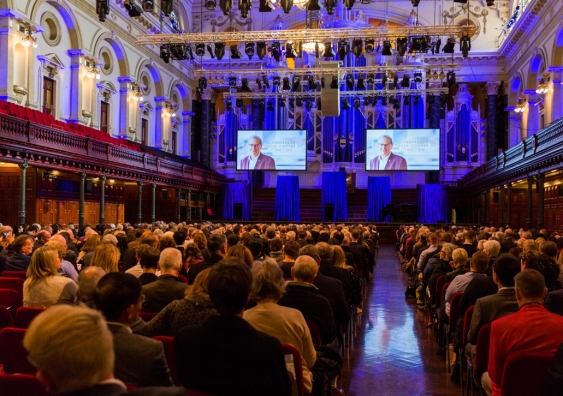
Guests at memorial service for UNSW Professor David Cooper AC. Photo: Bec Lewis
More than 1000 people gathered to pay tribute to Professor Cooper, immunologist and director of the Kirby Institute at UNSW Sydney for 32 years, who had dedicated his life to the prevention, treatment and cure of HIV and other infectious diseases. Professor Cooper, who passed away in March this year aged 68, was remembered by colleagues, patients, family and friends for his significant contributions to HIV treatment and prevention that saved countless lives in Australia and globally.
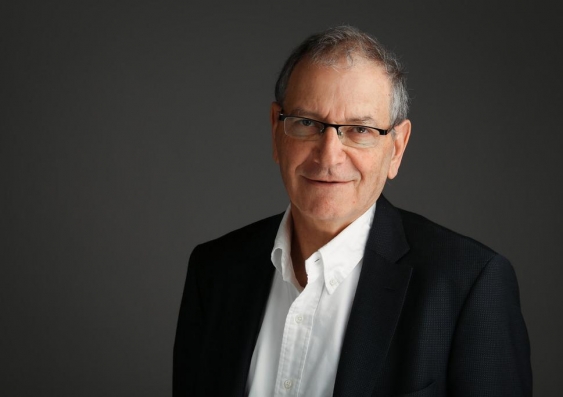
UNSW Scientia Professor David Cooper. Photo Maja Baska
The Hon. Michael Kirby AC CMG, patron of the Kirby Institute, spoke about Professor Cooper’s leadership and legacy, and the importance of ensuring the continuation of his research aimed at eliminating HIV around the world.
“David Cooper was tireless in the preparation. He was superbly professional. He gathered together a magnificent team. He reached out, beyond our country. We should be proud of such a scientist and of our country, its universities and the institutions, that produced him,” said Mr Kirby. “His family that nurtured him. His religion that taught him. The patients that loved him. But he was not ours alone. He belonged to the world of science. Today we honour him as a global hero.
“The worst tragedy of the premature death of David Cooper would be if his legacy were now to die. If HIV and other bloodborne diseases were to be reclaimed, remedicalised and returned entirely to the medical experts. He was the supreme interdisciplinarian. He was the master of team work. He smashed the silos of our minds,” said Mr Kirby.
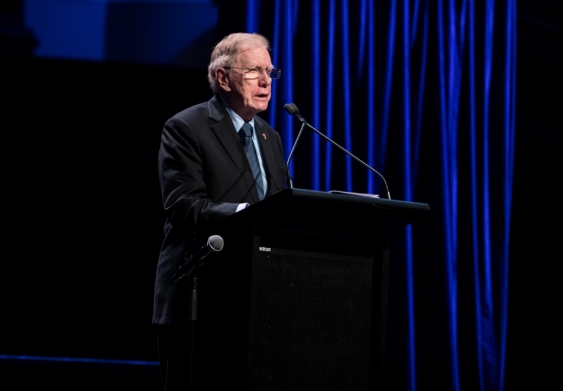
The Hon. Michael Kirby AC CMG speaking at the memorial service. Photo: Bec Lewis
Professor Ian Jacobs, President and Vice-Chancellor of UNSW Sydney, remembered David Cooper as a “wonderful leader, colleague, mentor and a brilliant mind”.
“He was the first academic I met when I accepted the role of Vice-Chancellor of UNSW. He travelled to Manchester to welcome me, and share his invaluable insights into UNSW. Above all, David ensured I knew just how important the work of the Kirby Institute was,” said Professor Jacobs.
“There are few people I have met, not just in medical research but anywhere, who combined David’s intellect, passion and compassion. His dedication to his research was surpassed only by the care and dignity with which he treated his patients.”
Other speakers at the memorial service included Clover Moore, Lord Mayor of Sydney, Associate Professor Anthony Schembri, Chief Executive Officer at St Vincent’s Hospital Sydney and Craig Cooper, CEO of Positive Life NSW. Ita Buttrose hosted the service.
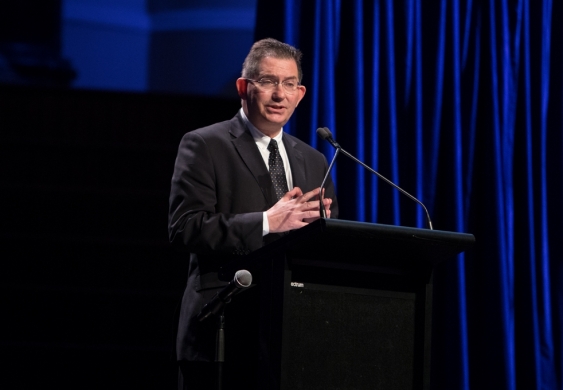
Professor Ian Jacobs, President and Vice-Chancellor of UNSW Sydney at the memorial service. Photo: Bec Lewis
Guests included former Labor Health Minister Neal Blewett, former Liberal Senator Peter Baume, former NSW Health Minister Jillian Skinner, former Governor of NSW Marie Bashir, Matt Thistlethwaite MP and Deputy Leader of the Opposition Tanya Plibersek.
On June 11, Professor Cooper was appointed a Companion of the Order of Australia (AC). He was recognised for “eminent service to medicine, particularly in HIV/AIDS research, as a clinician, scientist and administrator, to the development of therapies and to health programs in Southeast Asia and the Pacific”.
Of the honour, Mr Kirby said: “To honour David, and to do so this week, has allowed Australia to speak with one loud, clear voice. David was one of our finest, bravest and best of scientists and citizens. A golden decoration reflects the wattle of his beloved country. It is a shining consolation for Dorrie and the family. And for his colleagues at the Kirby Institute, and far beyond.”
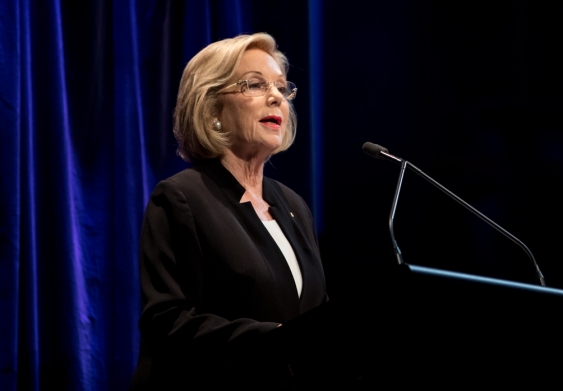
Ita Buttrose AO, OBE hosted the memorial service. Photo: Bec Lewis
170 New And Upgraded Schools Across NSW
June 14, 2018
The NSW Government will invest a staggering $6 billion over the next four years to deliver more than 170 new and upgraded schools to support communities throughout NSW – representing the largest investment into schools by any state government in history.
Premier Gladys Berejiklian, Treasurer Dominic Perrottet and Education Minister Rob Stokes today announced next week’s Budget would include funding for an extra 20 new and upgraded schools, taking the total education capital program to 170 projects.
“We are in the midst of a school building program NSW has never before experienced and this year’s Budget takes this to a whole new level,” Ms Berejiklian said.
“I am proud that our Government is making this unprecedented investment into schools and our students.”
Mr Perrottet said the Government’s strong economic management had allowed it to invest heavily into schools and this would be at risk if Labor returned to the Treasury benches.
“The NSW Government is investing more on school infrastructure over the next four years than Labor spent in their last 14 years in government.
“The previous Labor government closed more than 90 schools including Macquarie Boys High, Beacon Hill High, Maroubra High and Redfern Public School.”
Planning is set to begin this year on the 20 new projects including new primary schools at Rhodes East, Westmead, Green Square, Murrumbateman, Gregory Hills and Edmondson Park.
Planning will also get underway for a new Edmondson Park High School along with upgrades to Randwick Boys and Girls High Schools, Birrong Boys and Girls High Schools and Cecil Hills High School.
Other projects include an upgrade to Punchbowl Public School, and a joint upgrade to improve facilities for Carlingford West Public School and Cumberland High School students.
During the course of this year, work will commence on 40 new and upgraded school projects, and planning will also begin on a further 20 new and upgraded schools. This complements work that is currently underway on more than 110 ongoing major school infrastructure projects, bringing the total number of projects being delivered across the State to more than 170.
This means that the projects underway across the State will deliver a total of more than 43,500 new student places and more than 2000 new permanent classrooms.
Mr Stokes said all new and upgraded schools are being designed with sustainability in mind and to accommodate best practice in teaching and learning.
“There is more to do, but we remain dedicated to our goal of offering first-class education facilities to every student in NSW,” Mr Stokes said.
Also announced today is a continued blitz on school maintenance, with $160 million set to be spent in 2018/19, as part of the record $747 million investment over four years announced last year.
A maintenance audit by the NSW Department of Education released earlier this year showed the maintenance backlog had been slashed by $200 million, or about a quarter, over an 18 month period.
Projects currently underway across the State include Arthur Phillip High School, the Inner Sydney High School, Ballina Coast High School, the Hunter Sports High School, Oran Park High School, and Picton High School. A number of primary schools projects are also continuing, including Bardia, Penshust, Gledswood Hills, Ultimo and Jordan Springs public schools.
New and Existing projects
Brookvale Public School Upgrade*
Upgrade to existing school hall and two new permanent classrooms
Narrabeen Education Precinct
Establishment of new education precinct including expanding both Narrabeen North Public School and Narrabeen Sports High School to provide additional permanent teaching space and core facilities upgrades to meet enrolment growth, including the provision of specialist sporting facilities for community access
* previously announced
Existing projects underway
Curl Curl North Public School Upgrade
Expand school to provide additional new permanent teaching spaces and upgrade core facilities to address enrolment growth
Guiding End Of Life Directions For Aged Care
June 15, 2018: Media release - The Hon Ken Wyatt AM, MP, Minister for Aged Care
Providing Australians in all parts of the nation with support and the right advice on palliative care and advance care planning will be easier, thanks to the results of a $15 million investment by the Australian Government.
Aged Care Minister Ken Wyatt AM officially launched the End of Life Directions for Aged Care project today including a website that provides valuable palliative care and advance care planning resources.
The End of Life Directions for Aged Care website was developed by a consortium of eight partners comprising three of Australia’s leading universities and five peak industry bodies.
“The End of Life Directions for Aged Care website provides a one-stop resource for this crucial service, whether in residential aged care or at home,” Minister Wyatt said.
“The End of Life Directions for Aged Care consortium has also developed five toolkits that provide practical information to support people working in aged care and in primary health care.
“As well as this, the consortium operates a telephone and web-based support service to help aged care workers, nurses and general practitioners with information about end-of-life care and local services.”
Minister Wyatt said the consortium would be providing additional support to strengthen links and information sharing between service providers to improve palliative care for older Australians.
“Building up these partnerships will help lift the capacity of organisations across the country to deliver palliative care,” Minister Wyatt said.
“Importantly, the partnerships will involve different sections of the community, including people from culturally and linguistically diverse backgrounds, Aboriginal and Torres Strait Islander people and lesbian, gay, bisexual, transgender and intersex groups.”
The Turnbull Government is prioritising palliative care, with a $32.8 million investment in the 2018-19 Budget through the Better Quality of Care Comprehensive Palliative Care in Aged Care initiative, to extend choice for older Australians.
Visit the End of Life Directions for Aged Care website. Telephone help is available by calling 1800 870 155.
More Patients To Benefit From Expanded Medication Management Program
June 14, 2018: Media release - The Hon Greg Hunt MP, Minister for Health
The Australian Government will expand a community pharmacy program which enables Australians to better manage their prescription medicine, benefitting an additional 70,000 Australians a week.
The Dose Administration Aids (DAA) program involves community pharmacists preparing patient specific, sealed, tamper resistant devices that are designed to help individual patients take their medicines exactly as prescribed.
This program increases adherence levels and helps patients taking multiple medications avoid potential medication misadventure.
Minister for Health Greg Hunt said the Government’s successful DAA program will be expanded from 1 July 2018 meaning pharmacists can provide an additional 3.8 million individual services to patients across Australia each year.
“Pharmacies play an important role in our community. More than 80 per cent of community pharmacies are registered to provide DAAs and they are helping patients take the right medication at the right time,” Minister Hunt said.
“Under the expanded DAA program, the number of services available to patients will increase by about 70,000 to 380,000 per week.”
Liberal candidate for Braddon Brett Whiteley welcomed the announcement and said it will allow community pharmacists in Braddon to help more local patients, especially the elderly and chronically ill patients.
“The expansion of this service will help local pharmacists ensure more patients avoid hospitalisation and other problems that can arise when medicines are not taken as directed,” Mr Whiteley said.
In the 2017—18 Budget, the Government allocated $825 million over three years to community pharmacies to support and improve Australians’ access to medicines. This included $340 million over three years for the DAA program.
New Contract Awarded For Tourism Activities On The Sydney Harbour Bridge
15 June 2018: NSW Roads & Maritime
After almost two decades, the contract for tourism activities on the Sydney Harbour Bridge will change hands ushering in a new era for the historic landmark.
Hammons Holdings Pty Ltd, the operators of Scenic World in the Blue Mountains, the most-visited privately-owned tourist attraction in Australia, have been awarded a 20-year contract to operate the internationally renowned Sydney Harbour bridge climb attraction.
A Roads and Maritime Services spokesperson said this is a game changing opportunity that will lead to both enhanced and new experiences for the thousands of tourists who visit the attraction each year.
“Hammons Holdings outlined a strong and clear vision for developing new climb routes, improving accessibility and introducing new technologies for a more interactive and innovative visitor experience,” the spokesperson said.
“The Government is excited to be ushering in a new chapter for what is one of Sydney’s, if not Australia’s, most iconic structures.
“This was a highly competitive process with 13 expressions of interest received from Australian and international tenderers of the highest quality.
“Hammons Holdings is a third-generation, family-owned Australian business with a 73-year proven track record in developing and operating iconic tourism attractions. Their experience will ensure value for the taxpayers of NSW and a great experience for visitors to Sydney.
“We would like to thank the existing operator, BridgeClimb, for bringing the original experience to life nearly 20 years ago.
“Since 1998, millions of people have visited the bridge climb attraction and their foresight helped turn the Sydney Harbour Bridge into the internationally renowned attraction it is today.”
David Hammon, Director of Hammons Holdings, said the company was excited by the prospect of expanding opportunities for international, interstate and local visitors to experience the Bridge while providing a financial return to the people of New South Wales.
“Underpinning our vision for the Bridge is the idea of improving accessibility for the public and bringing it to life with new technology, so that more visitors can experience this iconic landmark in a safe and sustainable way,” Mr Hammon said.
“We also see potential to link the Blue Mountains and Sydney Harbour Bridge as tourist destinations, boosting the flow of visitors from one to the other and creating economic opportunities for western Sydney and the State in the process,” he said.
The new contract term will start from 1 October 2018.
To ensure a smooth handover, Roads and Maritime Services is working with BridgeClimb and Hammons Holdings to ensure forward bookings continue with the attraction operating on a business as usual basis.
Tickets purchased prior to 1 October 2018 will remain valid for the date booked.
For more information visit hammonsholdings.com.au or for stakeholder and ticketing inquires please contact the Hammons Holdings enquiry line on 1800 955 000.
Disclaimer: These articles are not intended to provide medical advice, diagnosis or treatment. Views expressed here do not necessarily reflect those of Pittwater Online News or its staff.